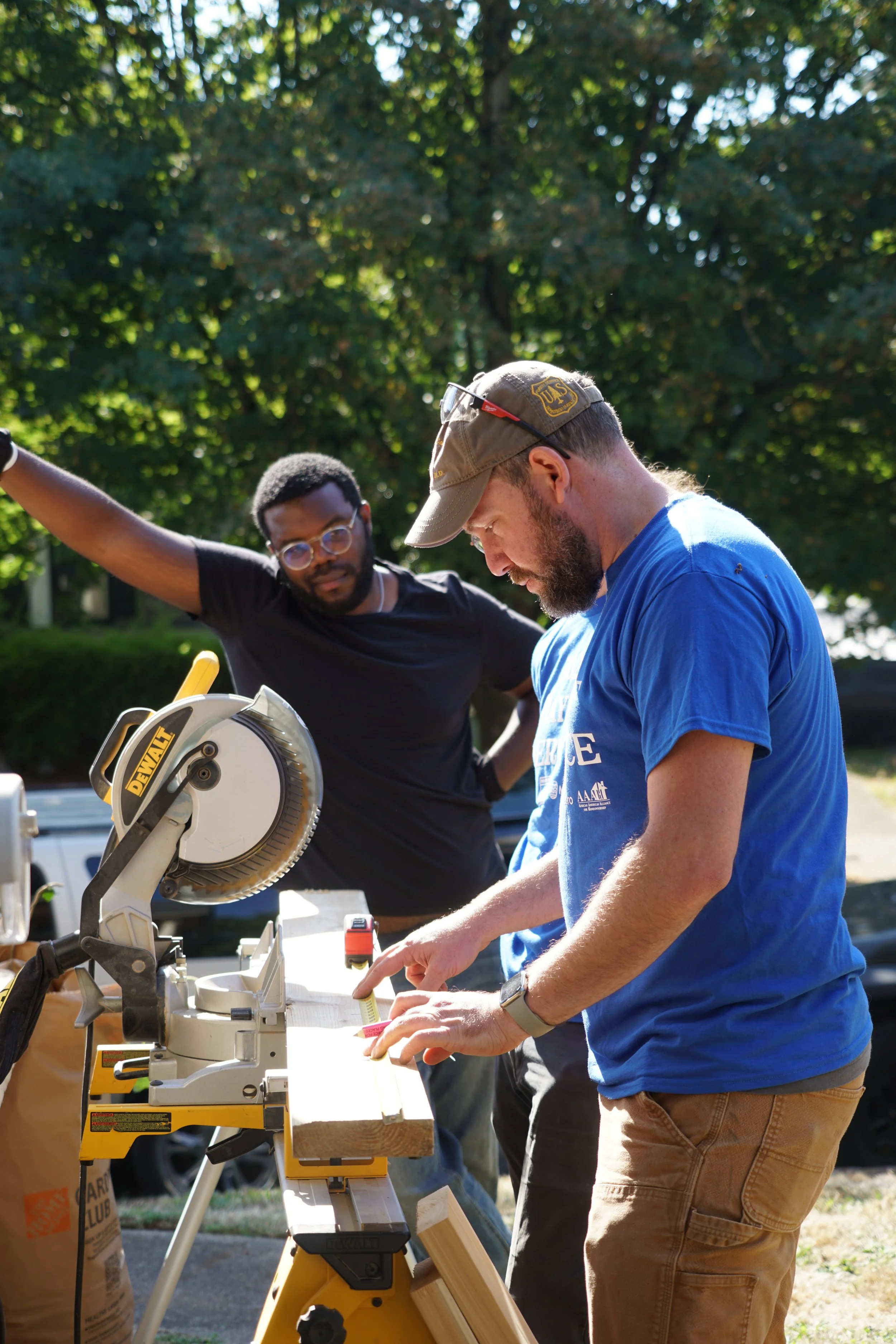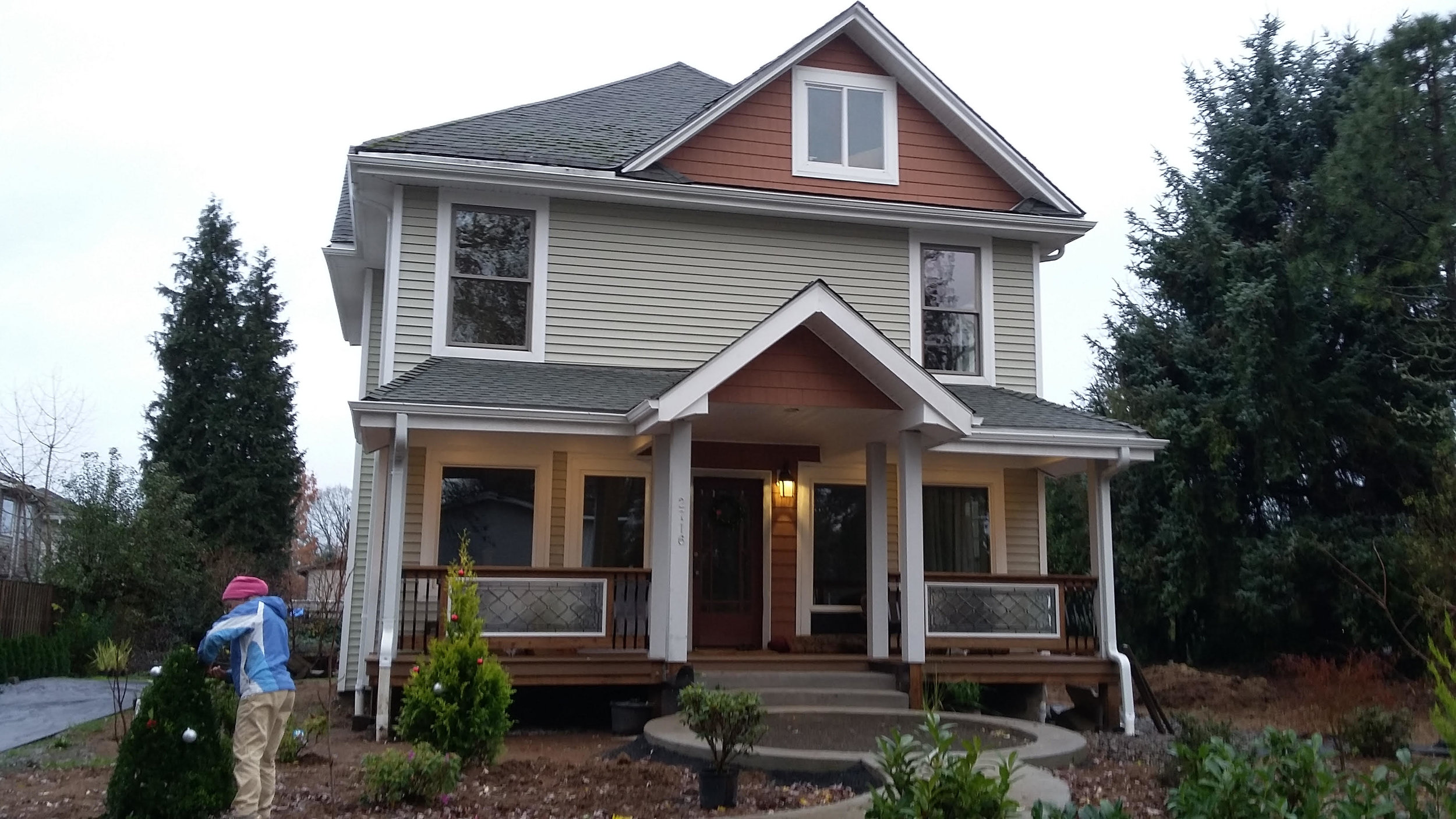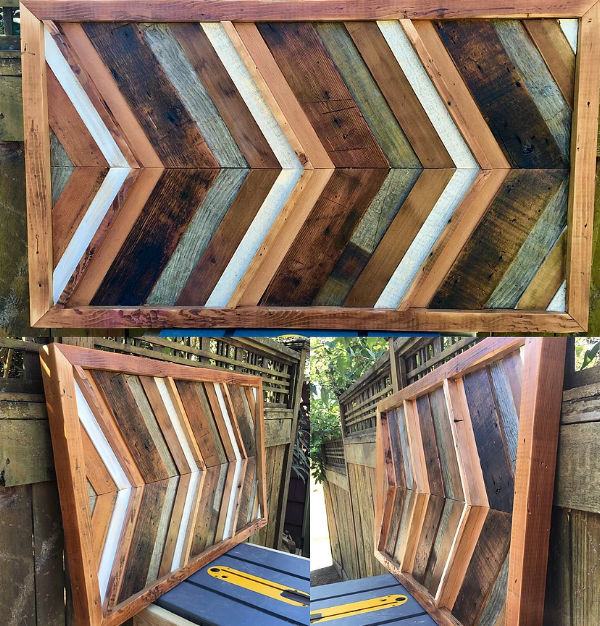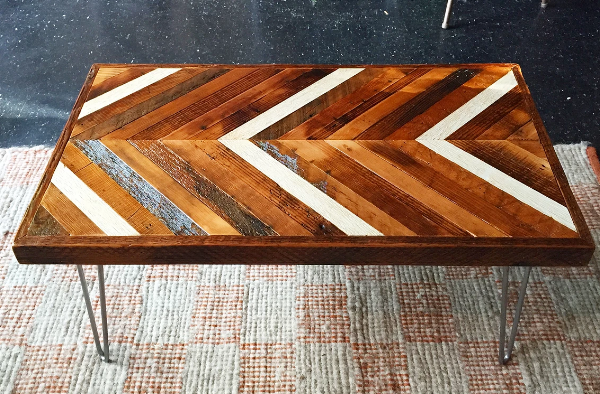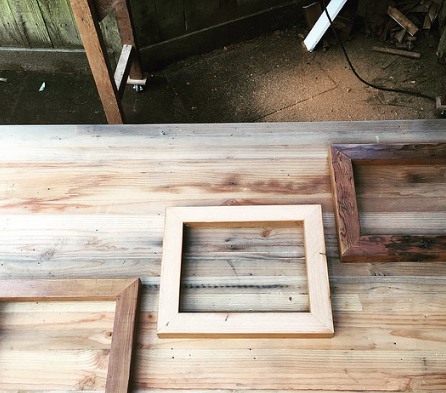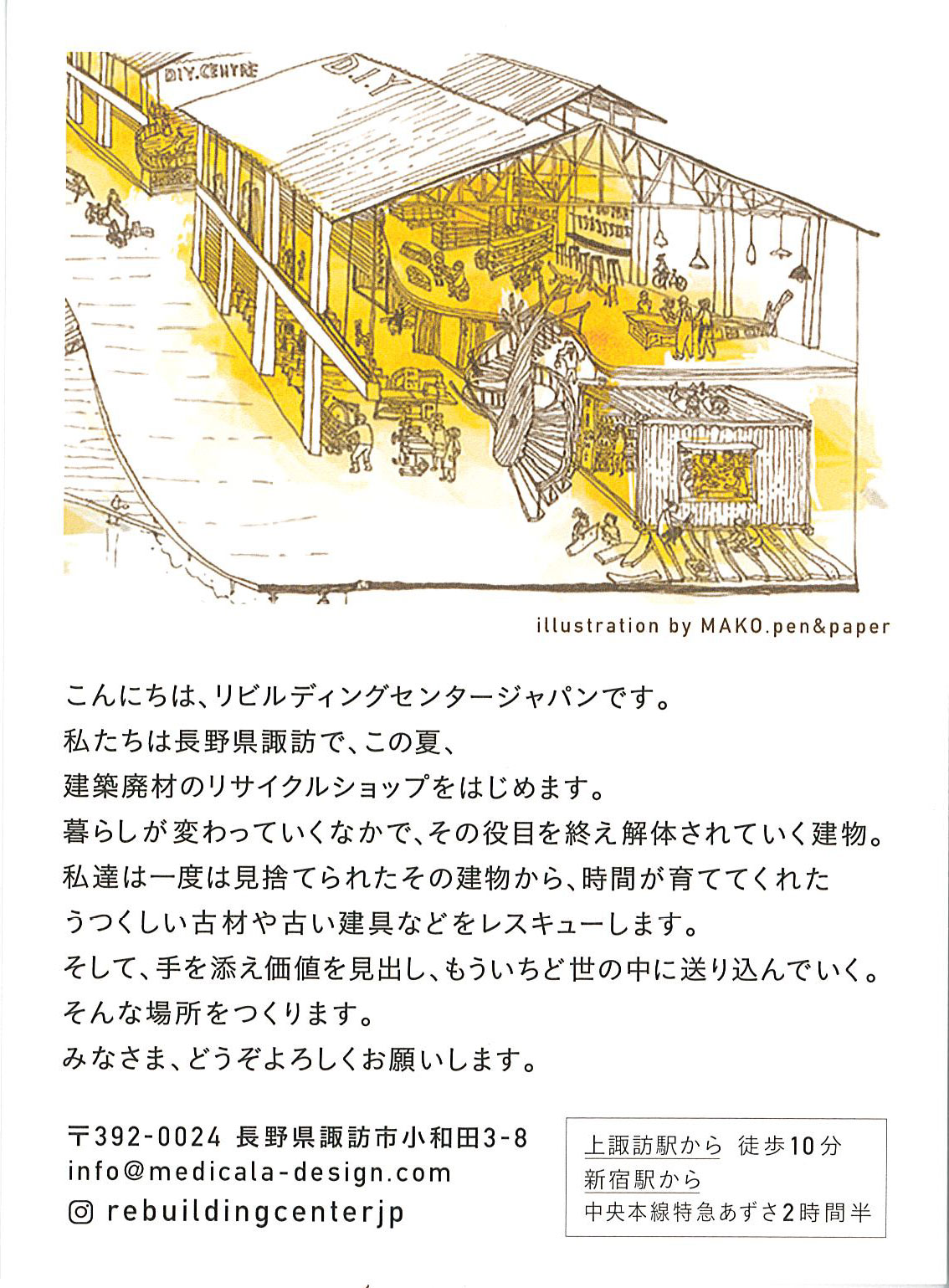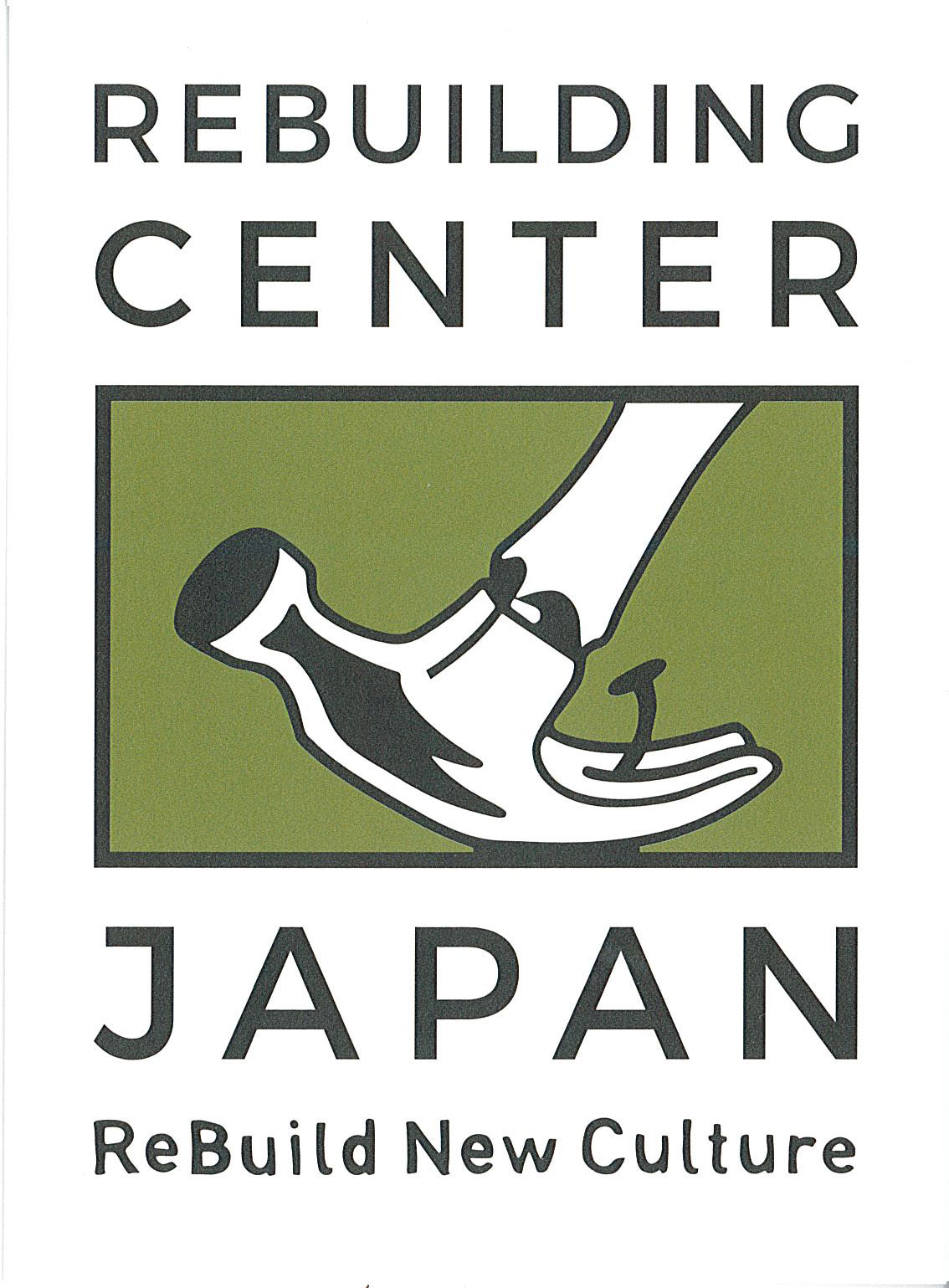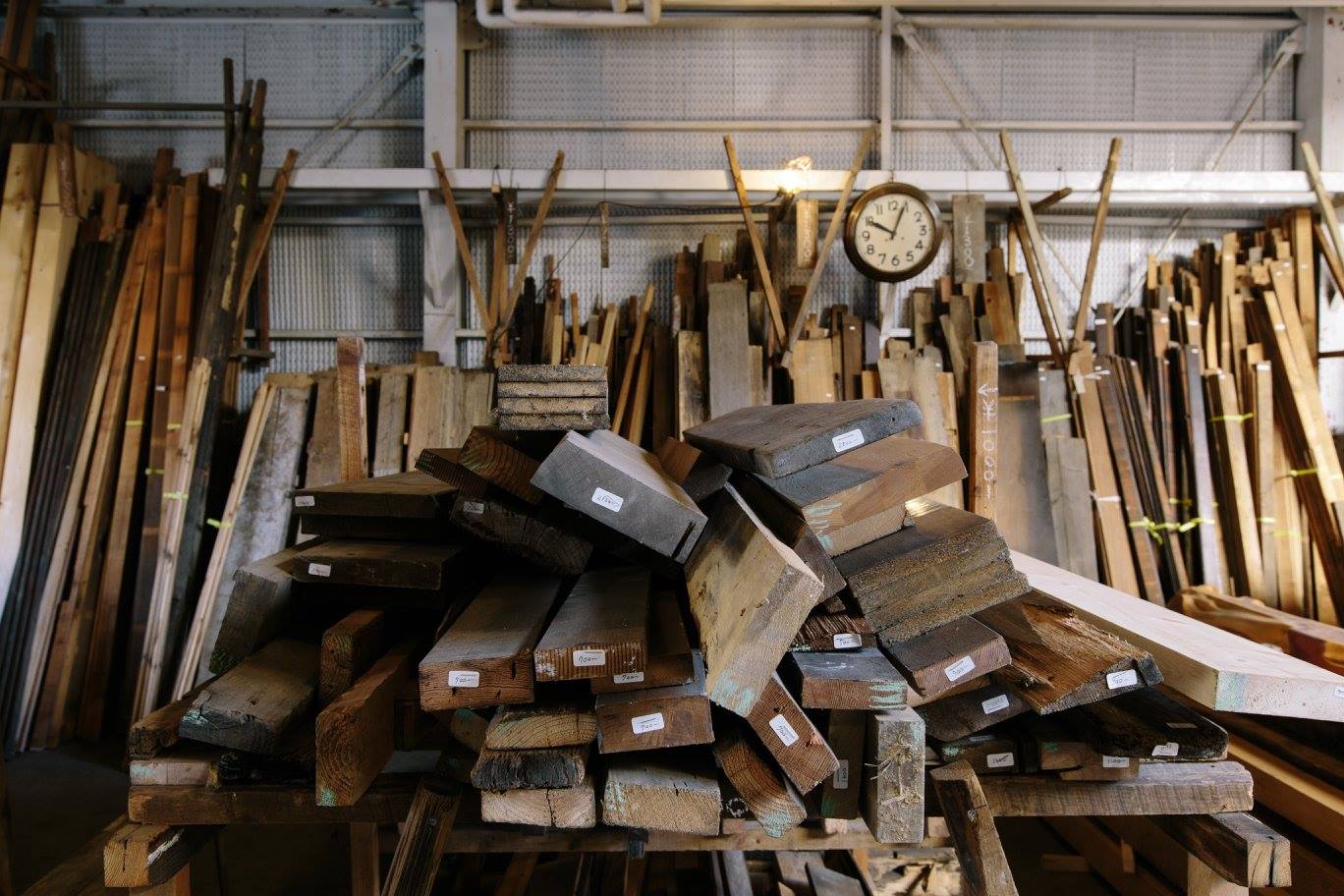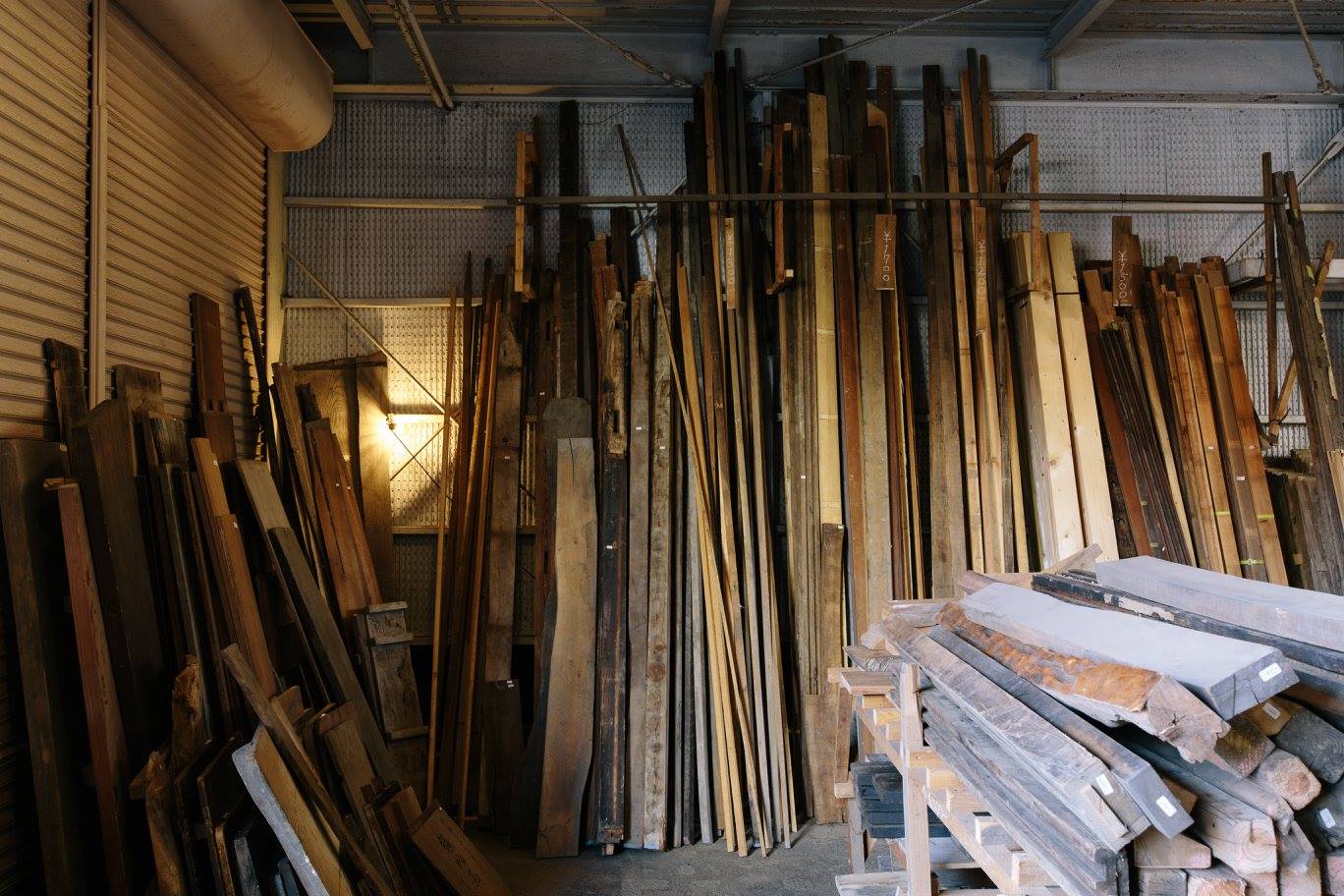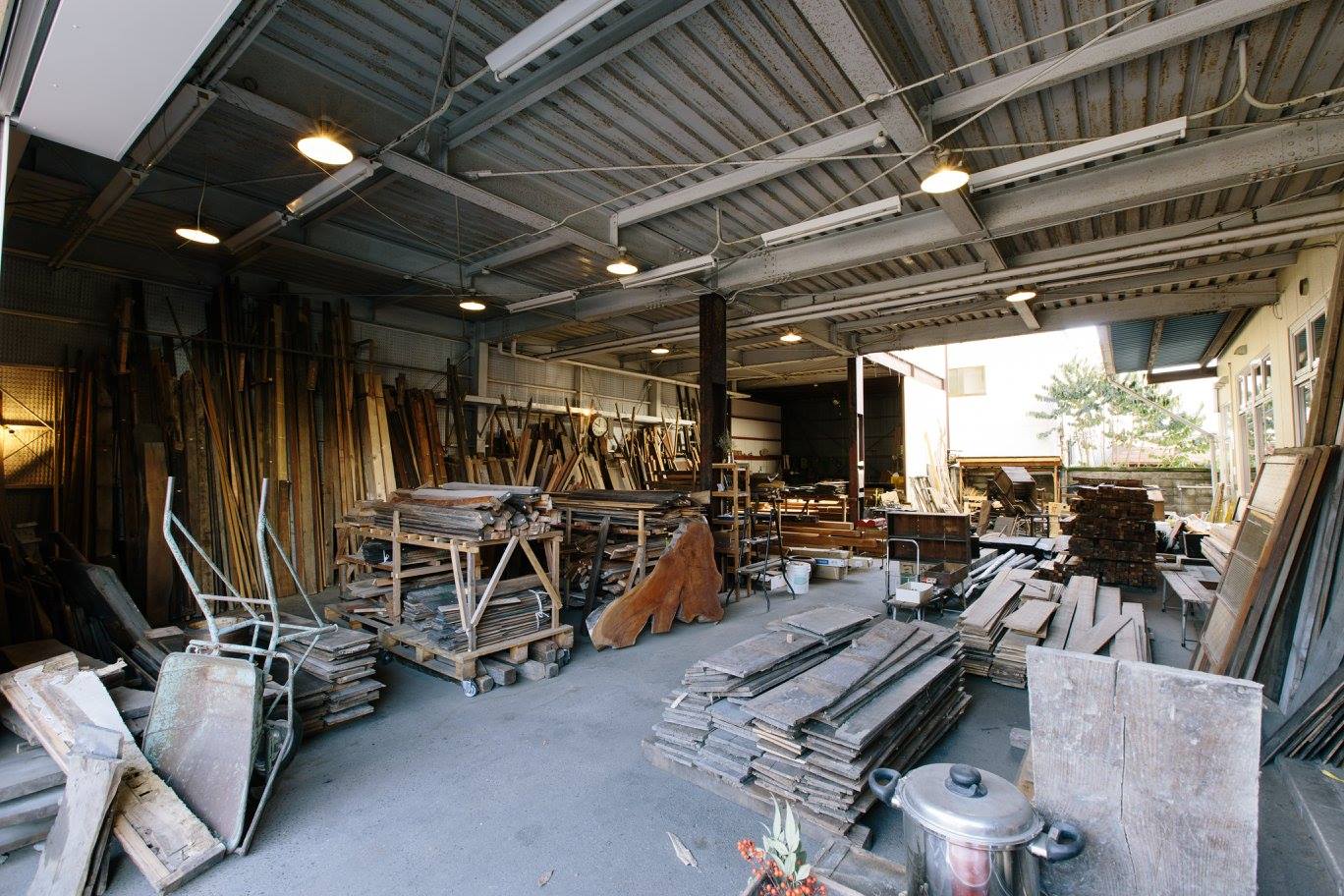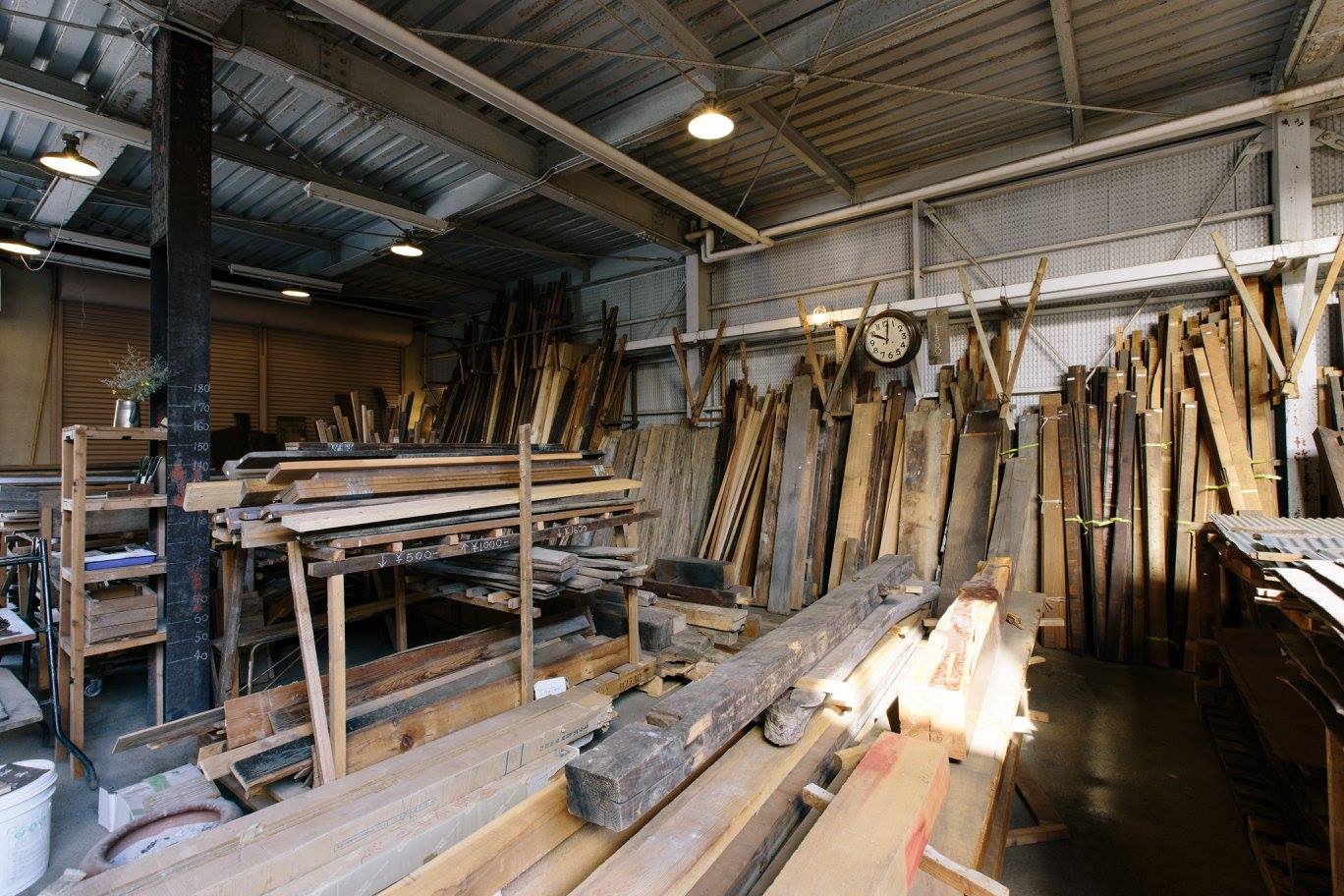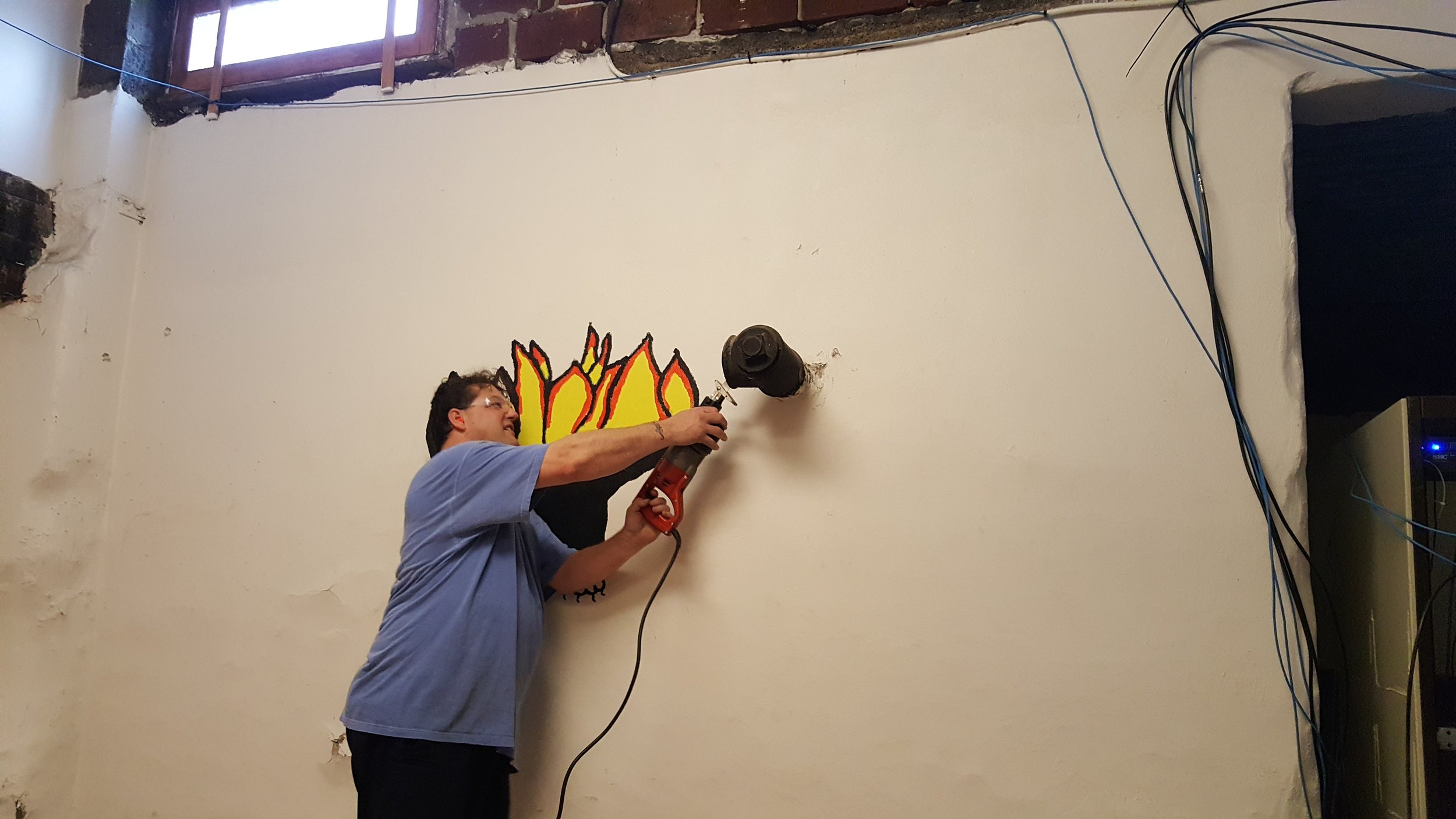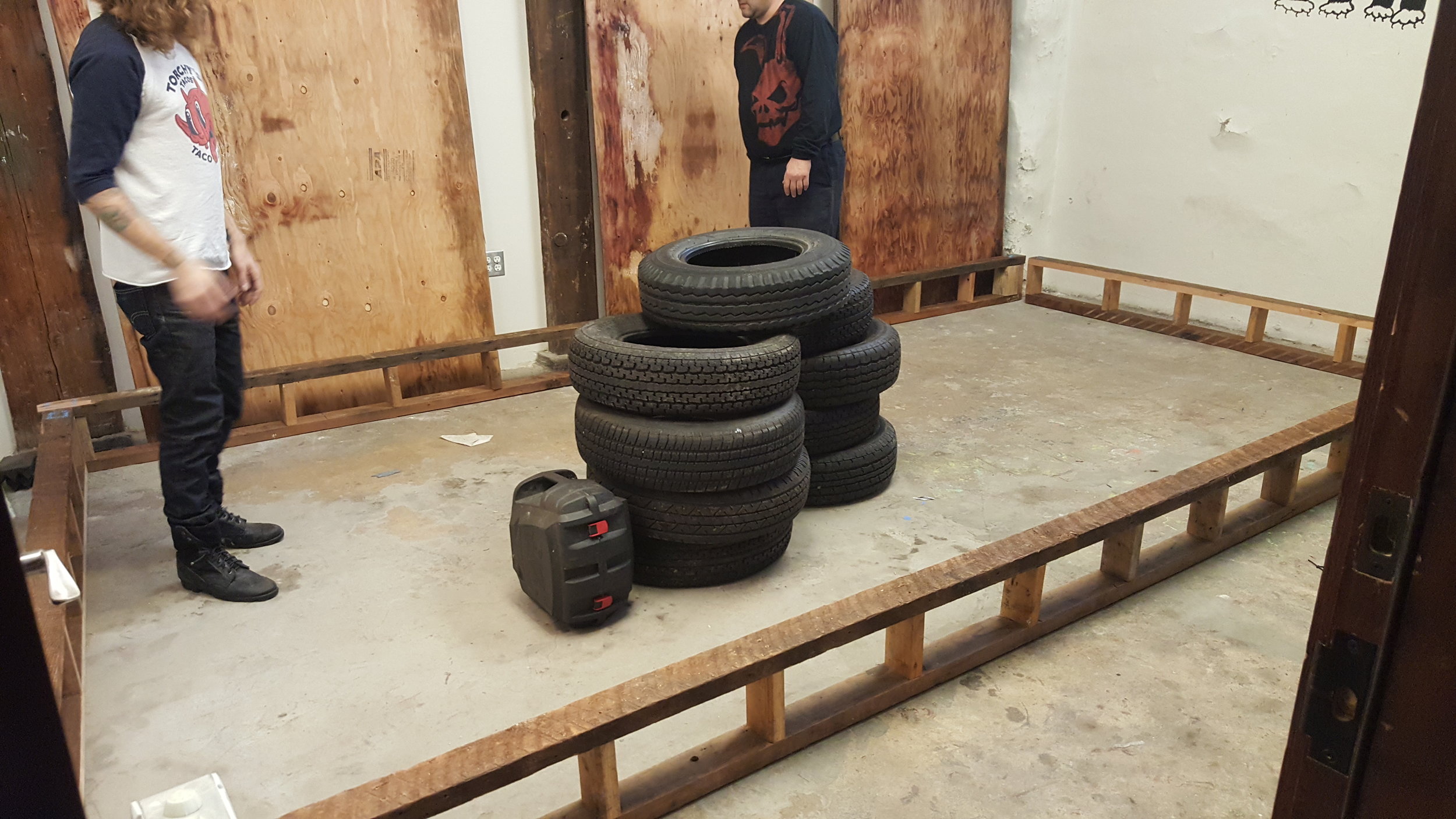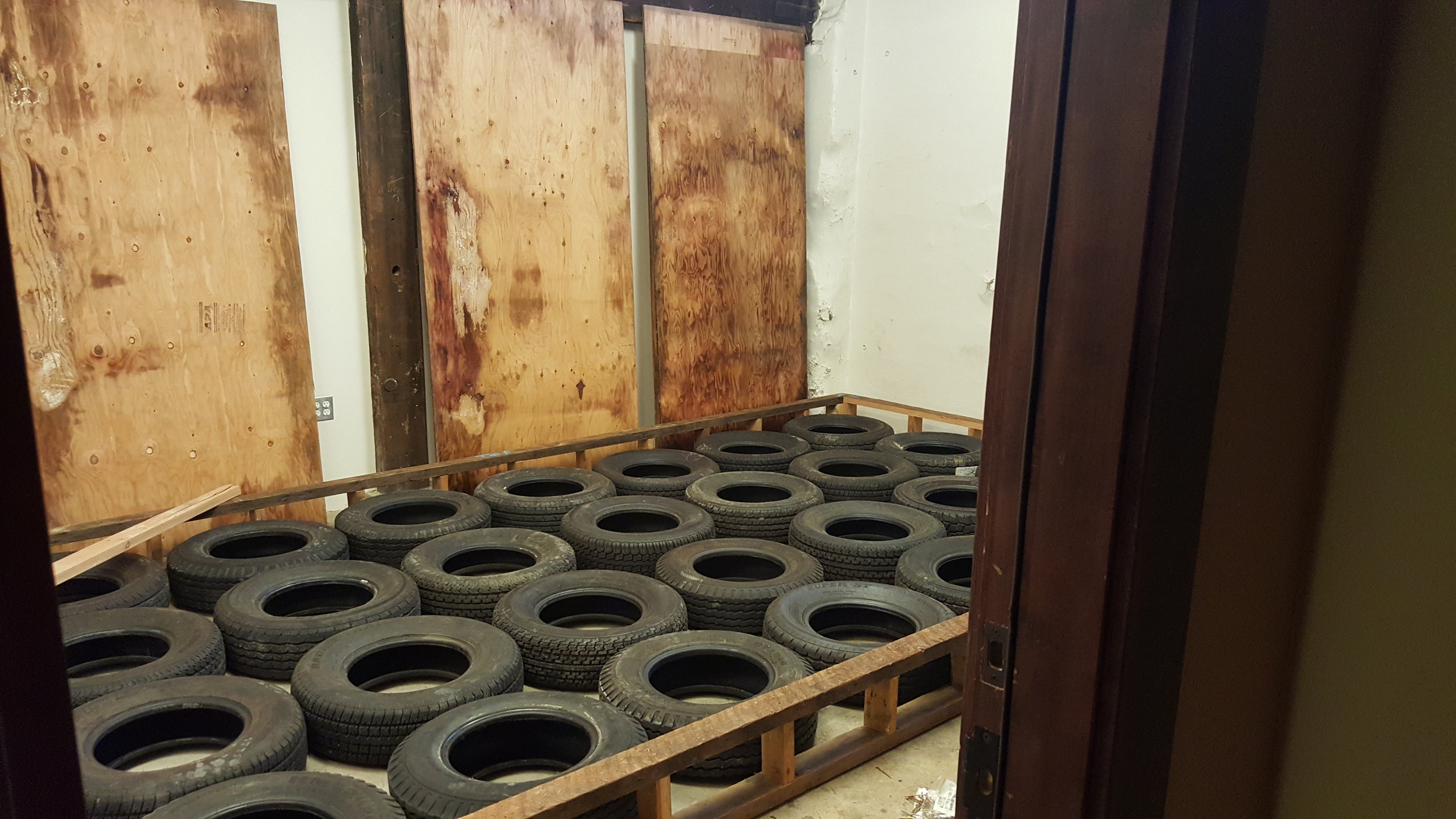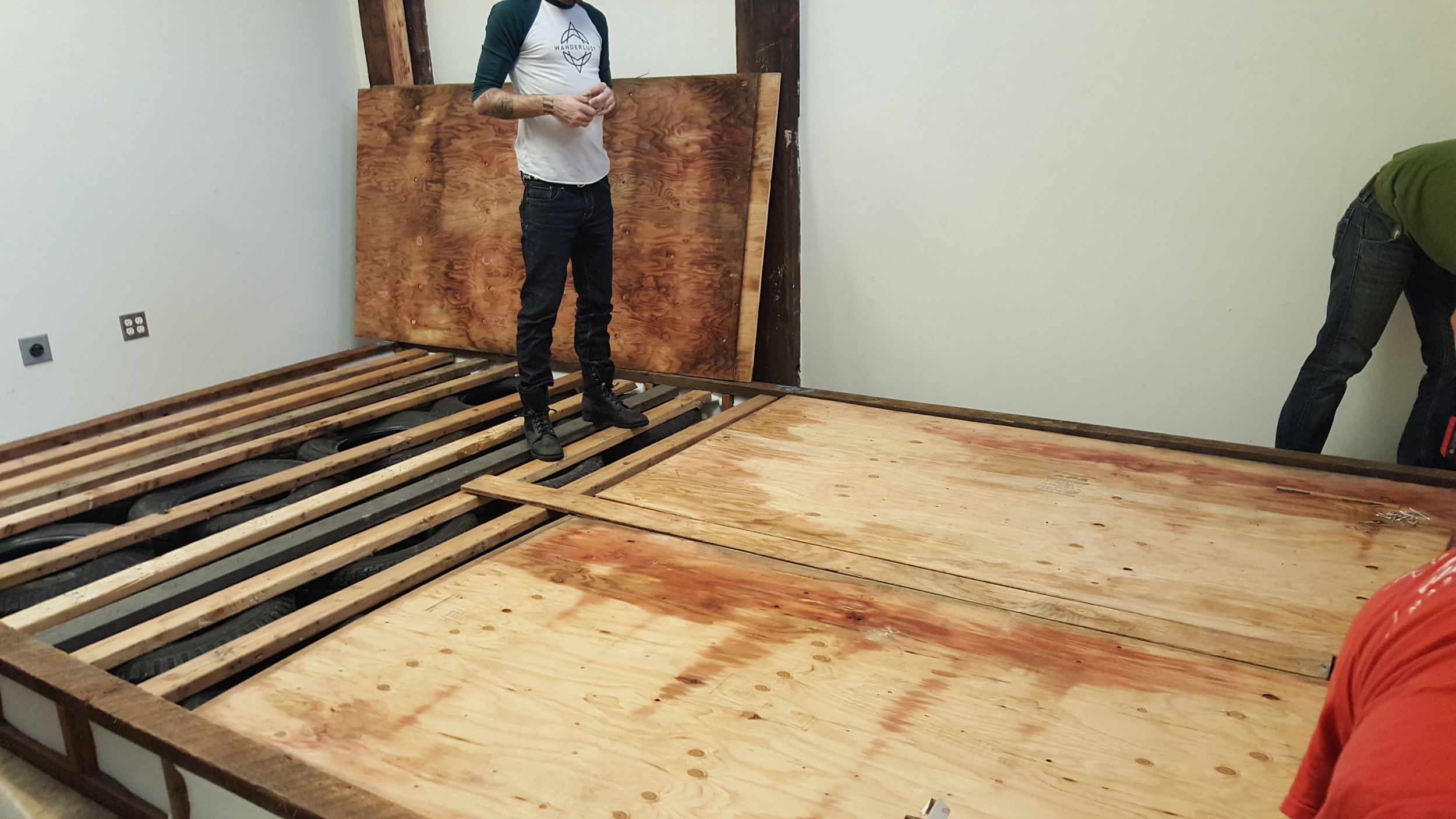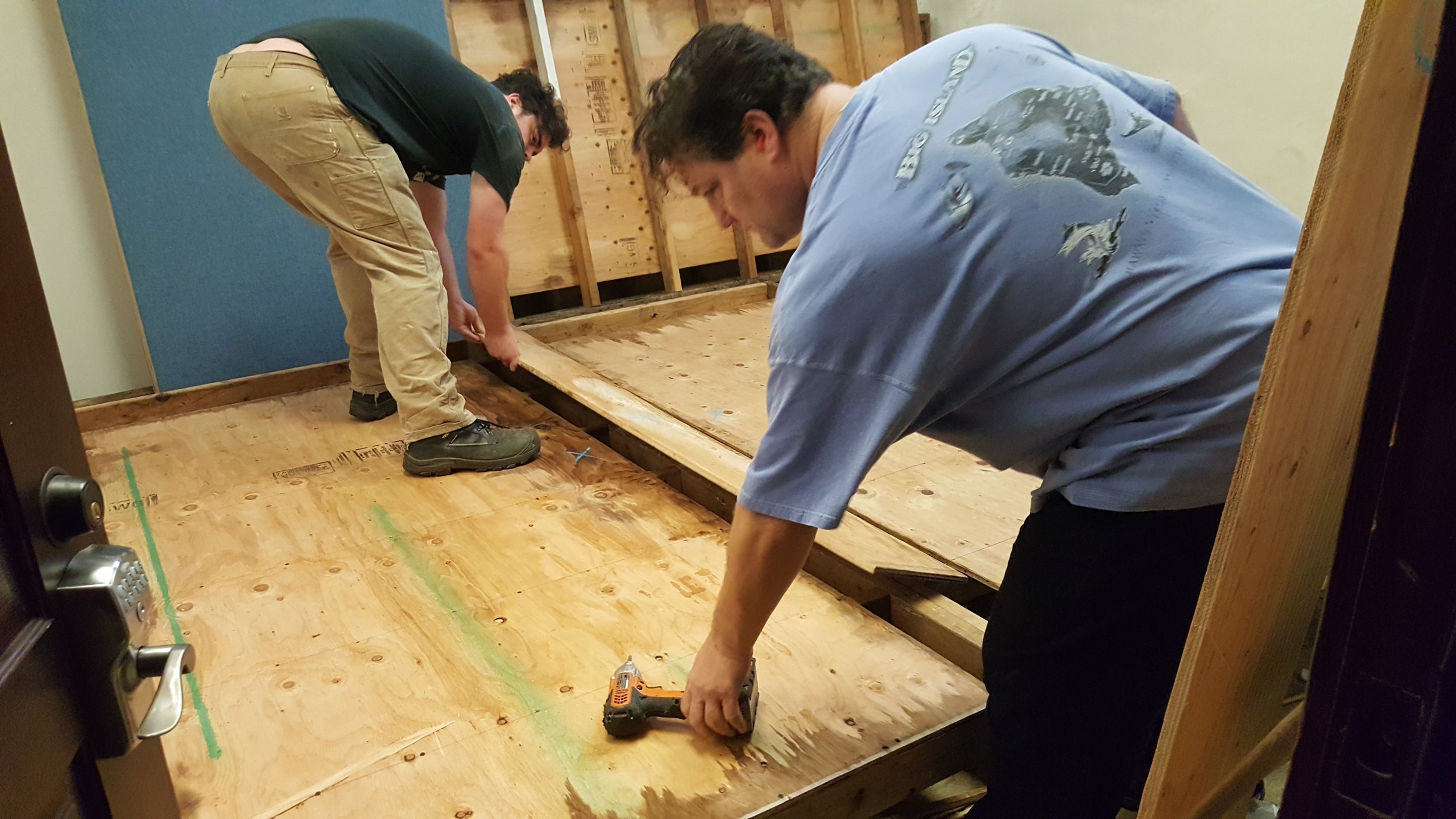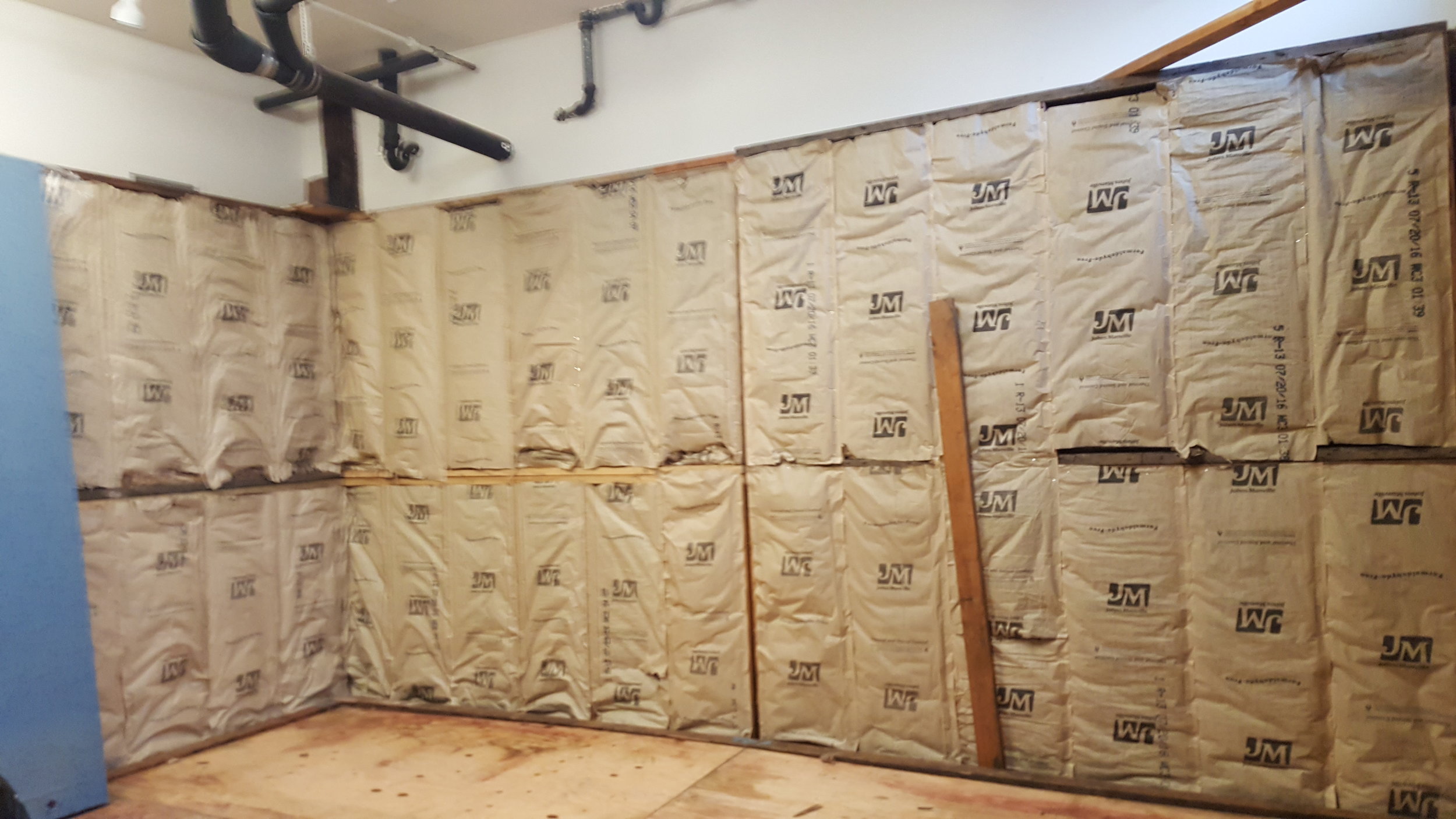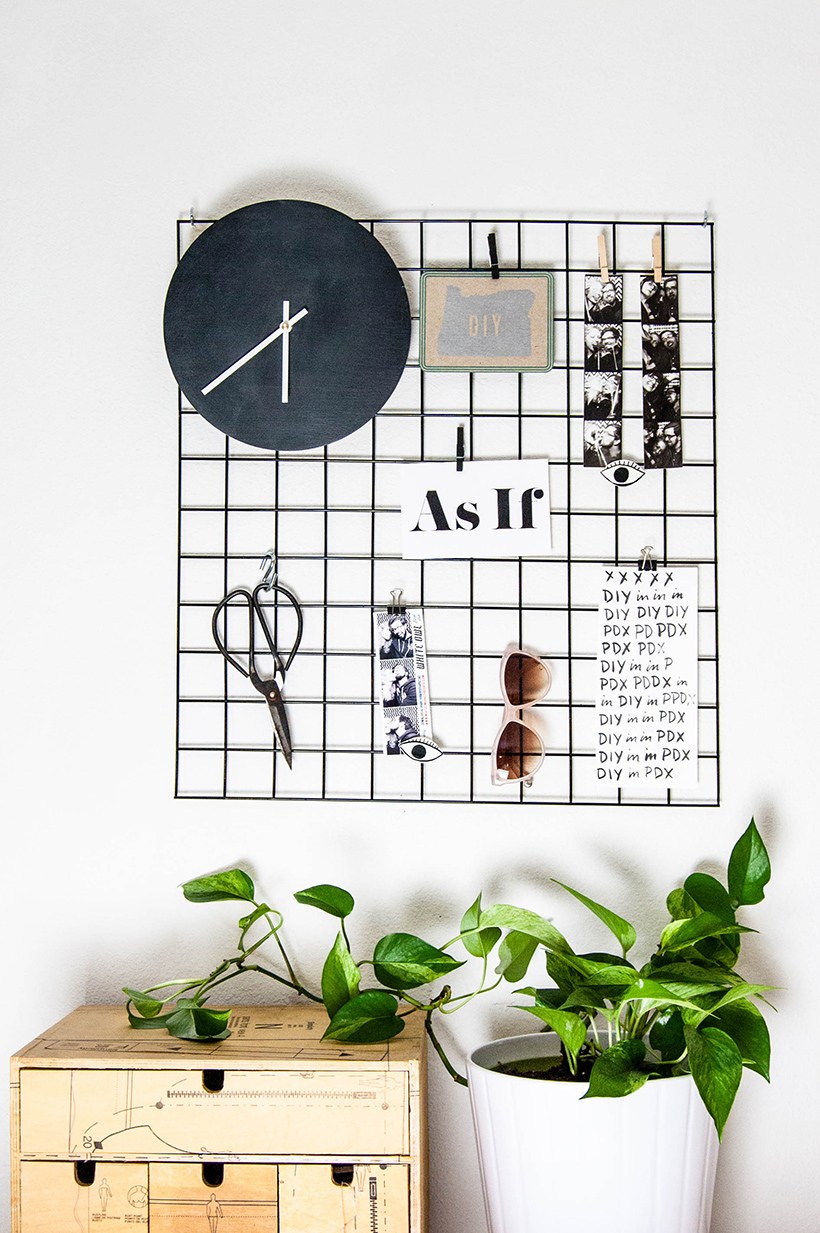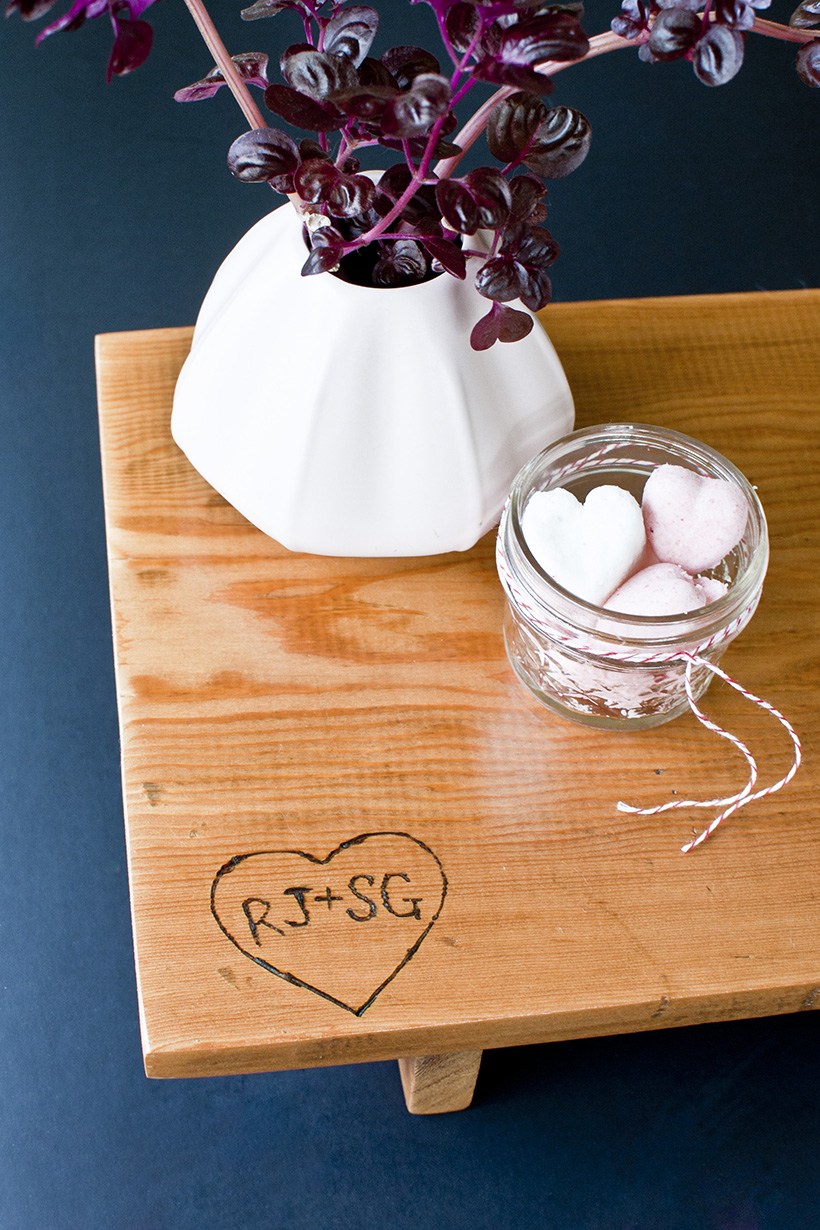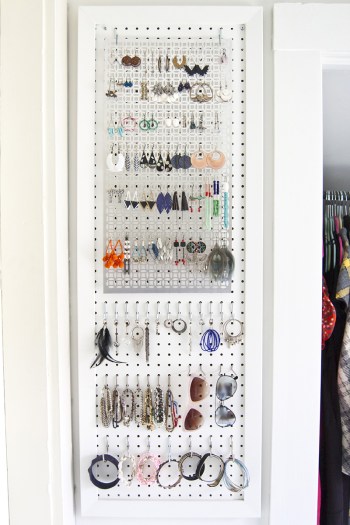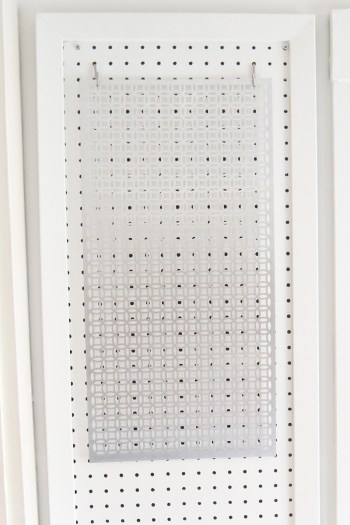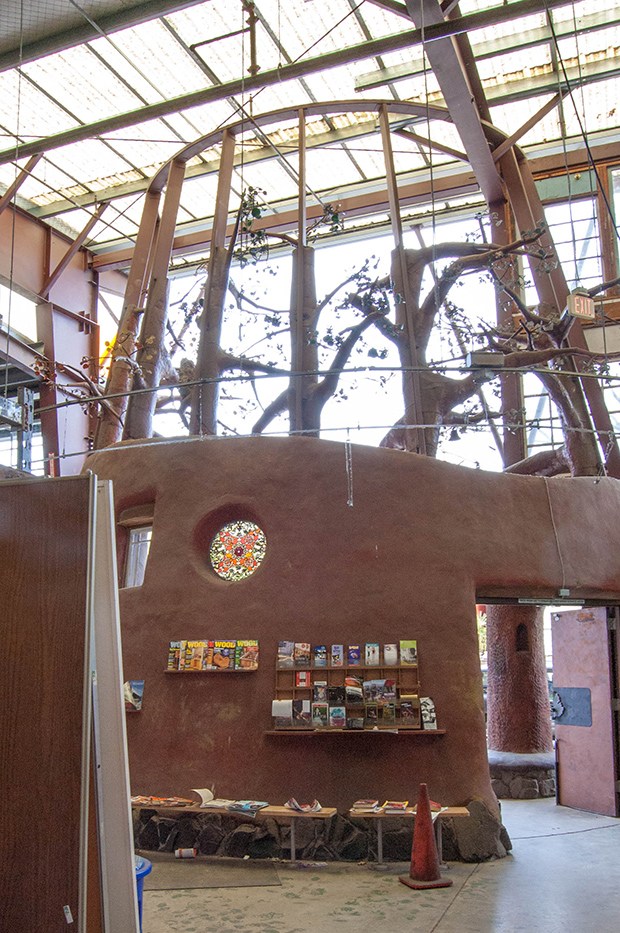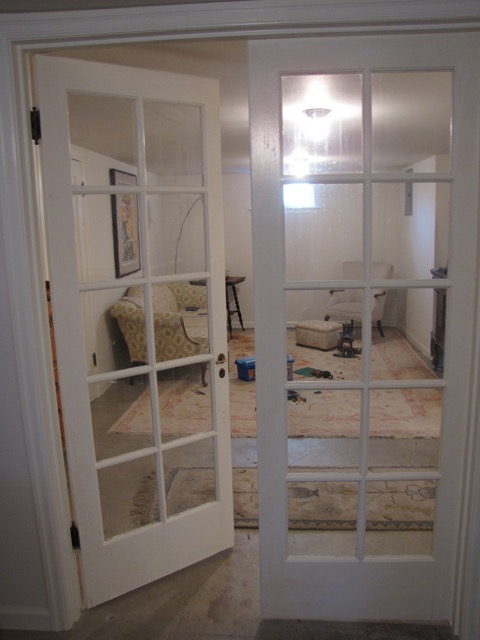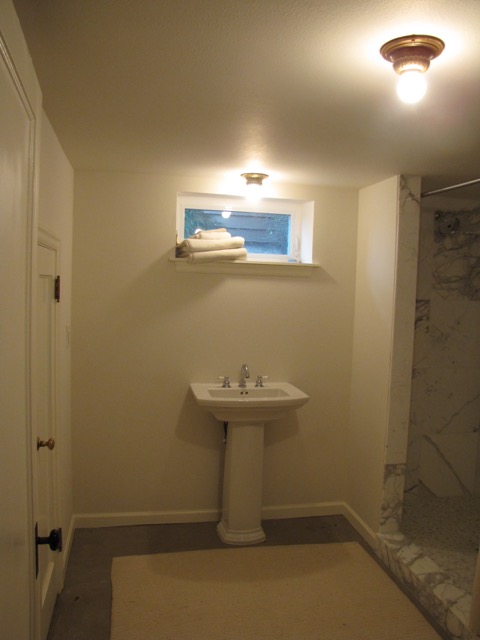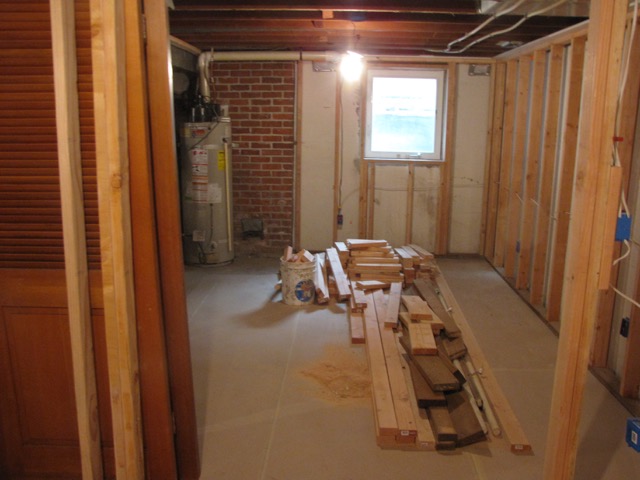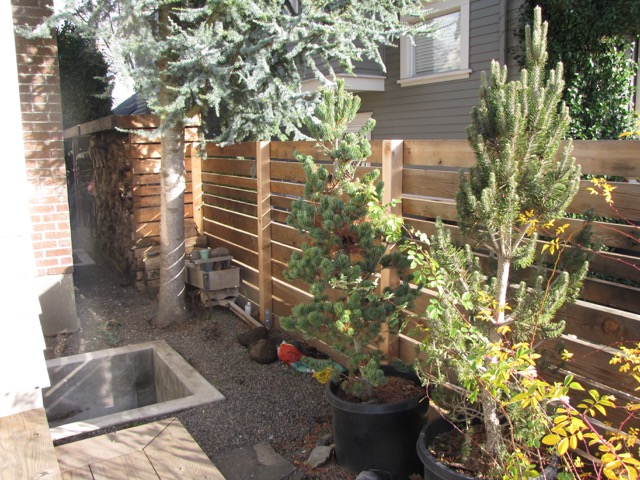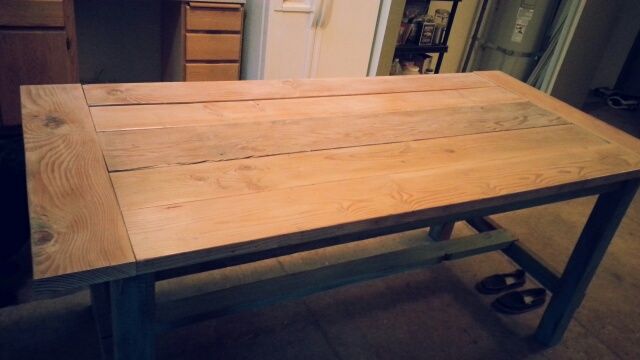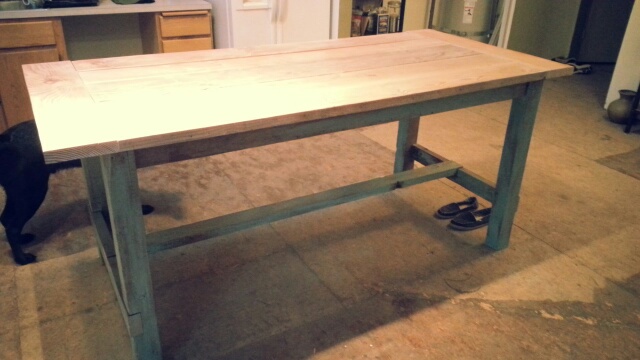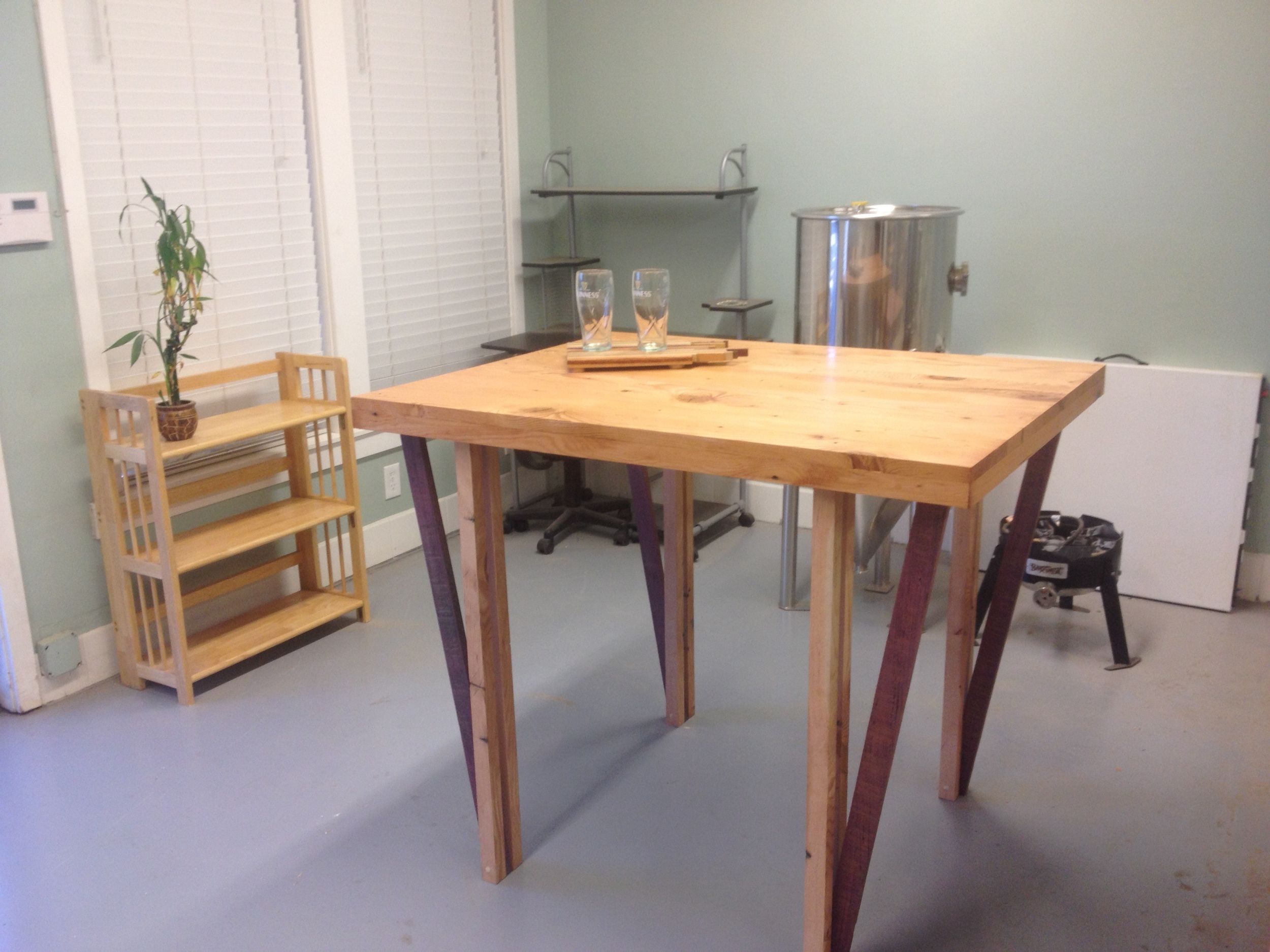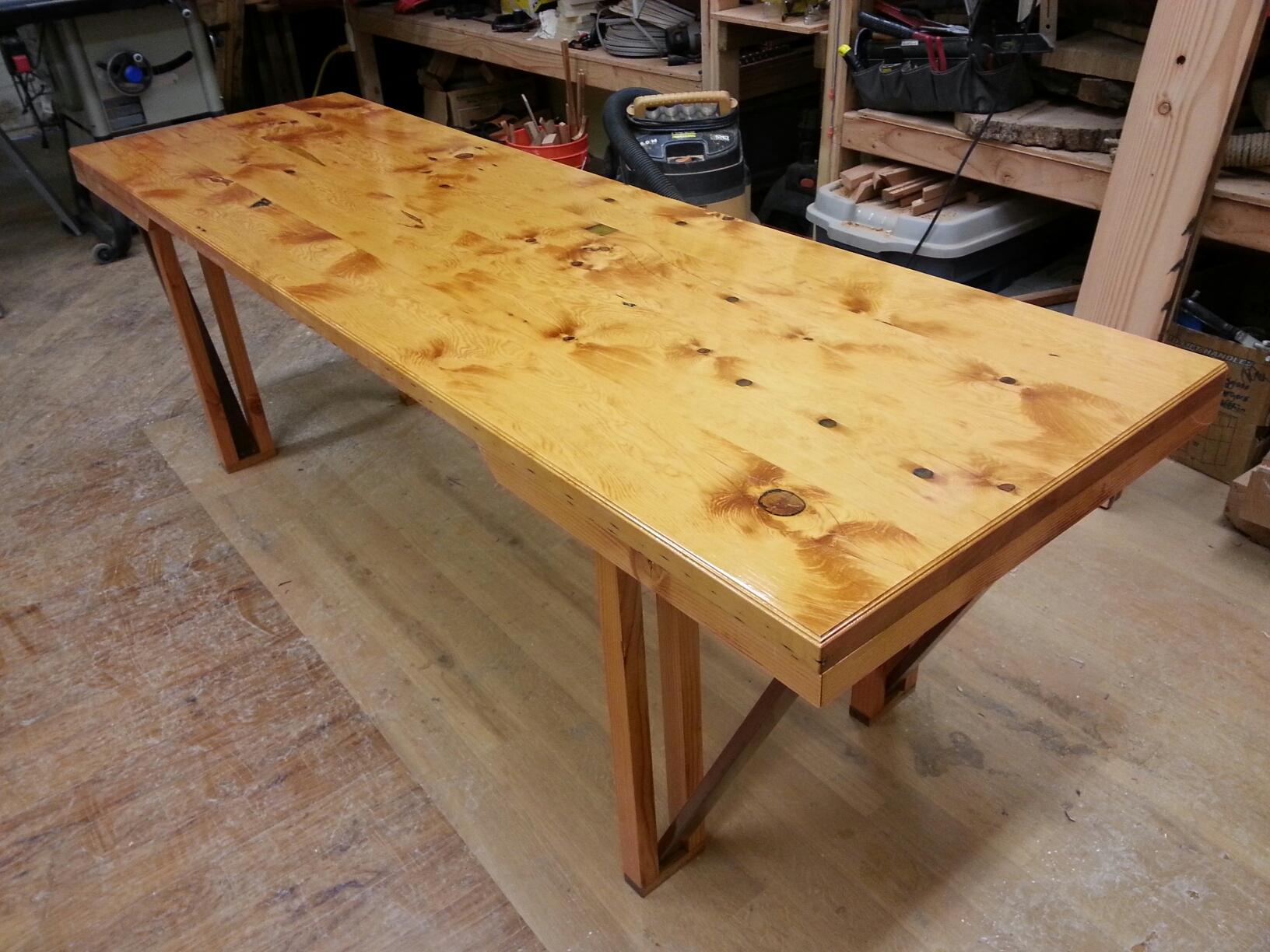At ReBuilding Center, equity, accessibility, home repair education, and waste reduction are pillars of climate justice. But what holds us together is our culture of scrappiness and joy in what we do. Creative reuse, be it in art, craft, or design, is a reflection of this ethos, of our belief that sustainable living can be fun as well as responsible.
ReUse Spotlight: Piedmont Station Food Carts
An Phan, Manager of the Piedmont Station Food Carts, is a regular at the ReBuilding Center. He has a passion for DIY projects that sparked from doing building maintenance for years. Some of his most recent projects can be found at Piedmont Station Food Carts at 625 NE Killingsworth.
We saw reclaimed materials in every direction while An showed us around and expressed his love for each of the pieces. To An, a piece of rotted wood adds an element of texture and color that deserves to be showcased, not thrown away. Each project has its own story, whether it is an old bowling lane turned into a table or a pieces of rough-sawn fir cut into a bookshelf.
Check out some of An’s thoughtful projects below and get inspired to start your own creative reuse projects!
Student Spotlight: Lynne Caldwell
By: Aaron Green
On occasion, our ReBuilding Center education staff has the privilege of receiving feedback from former students who let us know what they’ve been up to since taking a class with us. Sometimes those students are first-timers, and other times, as in Lynne Caldwell’s case, they’re six-time returning students. Wow! We asked Lynne if she’d be willing to let us interview her for our newsletter, and thankfully, she agreed! We hope you enjoy her story and find as much inspiration from it as we do.
A few years ago, before taking any carpentry classes with us, Lynne remembers wanting to try to build garden boxes. After selecting a few eight-foot boards from Home Depot and having them cut down to size, she grabbed her drill and got to work.
But, as she recalls, “I had no prior training… I had only used a hand saw but never a power saw of any kind.” Lynne did accomplish assembling her garden boxes, but afterward, she knew that having even a little more knowledge and access to power tools would propel her confidence forward during her next project.
Today, six classes with the Education team later, Lynne reflects, “I have learned so much from these classes from simple things, like why the little metal end is on the tape measure, to big things like becoming confident using a miter saw. The miter saw education and confidence has been the biggest thing for me and has made a huge difference in the projects that I feel comfortable trying.”
Lynne has gone on to build benches for her home, a work table for her garage, and she even replaced her garbage disposal after taking one of our Plumbing Basics classes. “One of my proudest accomplishments was replacing our garbage disposal… This is something that I have paid a handyman to do in the past, and I did it myself. And no leaks!”
Recently, Lynne built her very own coffee table out of a salvaged slab of basketball court wood. A self-proclaimed semi-regular at the ReBuilding Center, Lynne noticed a few big sections of basketball court material in the lumber yard one day. “I love basketball,” she tells us. “But I couldn’t think of what to do with the big sections. Then…I found smaller pieces broken down with the other flooring [and] I decided to try to make something.” Wanting the colored stripes natural to the old game flooring to show, Lynne did little to strip the wood after she got it home. She tells us that she miter-cut four pieces of wood to make a frame, and then glued those pieces together around the flooring. A couple layers of polyurethane later, and Lynne had herself a fantastic new table, made completely by herself.
When we asked Lynne what she might get up to next, she said, “I am always trolling the RBC for ideas [but] I plan to build a martial arts belt display for my son.” Lynne says she’s also working on a large bench for her porch. “I plan to add cushions too so that I can take a nap. Covered porch napping bench!”
We also asked Lynne what’s brought her back to the shop for classes so many times. She nearly brought us to tears when she said, “The instructors are really wonderful! I can’t say enough about how welcoming and patient they are. They show enthusiasm for their work, and they aren’t judgmental with beginner’s questions. As a middle-aged woman I was afraid of feeling intimidated in seeking out beginning educational opportunities in using tools. [These] instructors have always been super pleasant, organized, patient, and encouraging.”
Thanks, Lynne! We can’t wait to see pictures of your son’s martial arts belt display and, of course, the napping bench! We hope to see you in the shop again soon.
Cute Cat Story Alert: Family Builds New Kitty Tower Out of Grant High School Materials
Did you know that #catdrawer is a thing online? It goes to show that cats love snuggling into confined spaces! Sara Eddie and her family were getting a new kitten and decided to get ahead of the game. Sara’s husband, Bill, built a cat tree out of drawers from the Grant High School science lab and some lumber from the ReBuilding Center.
The inspiration came after Sara dropped off the adoption paperwork with the kitten's foster family and while perusing the ReBuilding Center, spotted a chair that looked very familiar. Their now college-aged daughter, who graduated from Grant, did many singing performances in the high school's auditorium and Sara and Bill had sat in those same chairs. This lead to some creative thinking about all the items salvaged from the Grant High School deconstruction project and the cat drawer tree idea was born.
How lucky is this new kitten to benefit from the loving inspiration of its new family and the resources at the ReBuilding Center.
Old Drawers to New Ends
Revive some cheap, old drawers into nice, new end tables with these DIY decorating tips from your friends at the ReBuilding Center. Expand your creative reuse skills and help promote the reuse economy in style. RBC has plenty of drawers of all different shapes and sizes (prices ranging $2-$10) that would be perfect for this project!
For this project you will need:
Photo credit: Desire to Inspire
- Salvaged drawers (available at the Rebuilding Center for under $10 each)
- Some house paint
- 4 legs from an old sofa or your local hardware store; or caster wheels
- Scrap wood cut to fit the inside of your drawers
- Blind nuts
- Screw driver
- Wood glue
- Measuring tape
Step 1
Photo credit: Shannon O
Attach the legs to the bottom of the drawers using blind nuts making sure that they are evenly spaced.
Step 2
Photo Credit: Shannon O
Use wood glue to glue your center piece of scrap wood into your drawers. Make sure to measure evenly and leave to let dry over night.
Step 3
Photo credit: Shannon O
Paint your drawers with the house paints. Let dry, and congratulations! You now have some gorgeous end tables to brighten up your room!
Photo Credit: Hammers and High Heels
Jami and Kourosh Remodel
This summer Jami and Kourosh Poumad completed a 4,300-square-foot home restoration using as many recycled materials as they could. They wrote and complimented the staff of the ReBuilding Center for helping them select the following, all of which were used in the remodel.
Kitchen Cabinets
Corian kitchen counter and sink
24 exterior windows
3 entry doors
11 interior door knobs
4 bathroom showers, sinks and hardware
9 Cast iron radiators
Stair railing
21 indoor light fixtures
Dishwasher
Stove
Fridge
Microwave
All deck straps
20 bags of insulation
BEFORE
AFTER
Jami and Kourosh kindly responded to questions we had that explained in detail their experience and reasons for using recycled materials from the ReBuilding Center:
Is this the first time you have used recycled items in your home?
This is not the first time. Whenever we have a repair or change at home the ReBuilding Center/recycled materials are our first choice.
For items that had to be “built-in," like the kitchen cabinets and countertops, the 24 exterior windows, and the stair railing, did you have any problem getting them to fit? Or did you have to modify them in some way?
Yes. The windows all had to be re–framed and one of the kitchen cabinets was converted to a sink module since the "set" didn’t include it. We also installed a kick plate at the base. The Corian counter was too long and had to be cut at one end. The stair railing had to be re-drilled and the old holes had to be filled in with wood putty, then re-stained. (The metal rails were new, not recycled)
Why do you use recycled materials?
Lower cost and we like to bring products and materials “back to life.”
Have you used sources other than the ReBuilding Center to obtain/purchase items?
Yes—Habitat for Humanity in Portland, Cedar Hills and Forest Grove; Goodwill; and Craigslist.
Do you have a philosophy that supports your use of recycled building materials?
Considering a great deal of effort and expertise goes into manufacturing a walnut door or a leaded glass window, it’s a shame to send a craftperson’s work to a landfill. We find that often a recycled item is just as good as or better than new [materials] and is less expensive. Those savings are passed onto our family and employees, it puts a whole new spin on recycling!
What other things have you purchased from the ReBuilding Center?
1 heavy duty outdoor door and 1 French door for our business
We re-purposed an alabaster hanging bell lamp to a soft table lamp
We installed 3 – 6’x1’ windows in our daylight studio
Insulation for the studio
16 cast iron radiators for our home
Roofing material for our home
A double stove for our home
Of all your purchases of recycled items, which do you like the most?
We like the windows used on the front deck in place of iron balusters. It saved us a lot of money in place of using many balusters. And it gives the home a charming artistic flair without being over the top.
UNIQUE UPCYCLED CABINET DOORS
Found on Pinterest, here are some fun craft opportunities utilizing old cabinet doors, which ReBuilding Center has plenty of! Not “recycled,” but “upcycled” into a southern style work of art, these serving trays are perfect for any style home décor. The one shown above was created by Kim from Savvy Southern Style and included on the Cottage Market Blog.
Here’s another cabinet door upcycled into a useful tray from Randi of Dukes & Duchesses. Follow her how-to here >
And another! Inspired now? This one is from Addicted 2 Decorating. Follow Kristi's informational how-to here >
The ReBuilding Center is a good source for these and many other objects that can be upcycled into unique uses. Get your creative reuse on and tag us in your next project @rebuildingcenter!
Donation Strengthens ReFind Education & Class Offerings
Dawn St. Clair, Rick Pogue and Stan Pulliam with Heffernan Insurance dropped by the ReBuilding Center last week to present the ReBuilding Center with a check for $3,000 to support ReBuilding Center’s ReFind Education Program, which provides hands-on educational classes for adults and kids on how to safely and creatively work with used building materials.
This important donation will help support our ReFind Education program by supplying our shop with much needed equipment such as chop saws, nail guns, band saws and other various hand tools which will strengthen our capacity to bring hands-on learning opportunities to 7th graders and basic carpentry and DIY classes to adults!
“The support couldn’t have come at a better time,” said Dave Lowe, Volunteer Services Manager, “we need new equipment and replacement parts and are so grateful for Heffernan’s support!” ReFind Education offers a three-day class entitled “Three Stringed Theory,” through Portland Public Schools’ 7th Grade Maker Experience. Students from Beverly Cleary Middle School were building three string guitars when Heffernan’s associates came to present their check.
Thank you, Heffernan!
Aaron Green, Woodworker: Making Old Things New Again
Aaron Green’s woodworking business is called “The Regrainery,” which references the craft of finding elegance in aged and used woods. The Regrainery breathes new life and purpose into these aged materials through creative design and inspired innovation. Aaron finds the used lumber at salvage stores like the ReBuilding Center. He notes what the wood was once used for: flooring from a torn down house, siding from an old barn, rafter beams from the early 1900’s, etc. He then planes and shapes the wood to fit into new designs he has created for furniture, shelving, and even jewelry. These newly crafted products are then sold to local customers, on view at street festivals, and at trade shows. One can see the symbiotic relationship between craft persons like Aaron and the resources of the ReBuilding Center. We sat down to chat with Aaron about his practice, thoughts on sustainability, and revealing the hidden beauty in reclaimed materials. See the interview below.
How did you come up with the title of your business: The Regrainery?
The name “The Regrainery” didn’t come to me right away but was the product of several weeks of brainstorming with my wife and friends. I wanted a name that could represent my business goals, that would reveal what we were about as a business without being a dead give-away, and that had an appealing ring to it. I settled on The Regrainery because I felt it implied a sense of industriousness, it held the prefix “re” (which would allude to our sustainability and creative-reuse values), and because it sounded compelling.
Why do you use old, recycled materials in the products you create? Sustainability? Aesthetics? Cost?
I use old, recycled materials for a few reasons. First, I love how reclaimed woodworking looks when it is finished. When you get a chance, check out what the guys at Stumptown Reclaimed make. They are reclaimed masters! Also, with only a few woody exceptions, I think working with reclaimed wood ends up looking better than new wood (but that’s just me!). Second, a personal value of mine is restoration, and my work allows me to literally take old wood and make it into something new again. I love planing away old, rough surfaces to reveal the beauty hidden beneath decades of dirt and weathering. Third, I believe in sustainable building practices, and since wood can last for centuries, I see no reason to buy new stock if your neighborhood reclaimed or salvage store can sell you the same thing (and at a better price!).
Do you have a philosophy related to your use of recycled versus new materials?
Absolutely. The Regrainery began as a philosophy before it became something practical. It stemmed from my belief that the run-down, the weathered, and the broken can be restored. I believe almost anything (e.g. people, gardens, communities, and wood) can be made new. I also believe that when a little work is put in, genuine beauty has a chance to be revealed. So, by using recycled and salvaged materials in my work, I get to practically explore a very rewarding process that I don’t think new materials can offer.
"I also believe that when a little work is put in, genuine beauty has a chance to be revealed. "
-Aaron Green, The Regrainery
Did you have any woodworking experience before creating your business?
My Dad made much of my family’s furniture while I was growing up, so I had many opportunities to watch and learn from him. Outside of him, however, I’ve just built as a hobbyist.
Do you have a workshop where you build your products?
Yes, I work out of a garage space that I rent from a neighbor in the NE Alberta area.
How/where do you find customers?
Initially my customers came from friends and friends of friends, but eventually I expanded to a retail pop-up shop (street fairs mostly) model. Last summer I was at nearly every street fair in Portland and had the opportunity to sell directly to customers as well as acquire leads on commissions.
Do you sell any of your products through shops or stores?
Do you sell you products at street fairs?
Yes, beginning in 2016 I sold at over a dozen street fairs around Portland. Keep an eye out for us this Spring and Summer at your local street fairs! I’ll be partnering with other small business too, including a painter and a leather worker!
Do you collect materials before you know what you’re going to use them for? Or do you have a design in mind and select materials to fit the design?
Generally, I don’t. As much as I’d love to buy every last stick of old-growth at the ReBuilding Center, my garage space and budget always have the last word. Instead, I buy my wood after having drawn up a design for commissions.
Do you ever wonder about the previous life of the materials you use?
All the time. But, I usually don’t have access to that information. One day I plan to implement the stories of my materials on my website. Personally, I think knowing where something came from, or who may have owned it or used it, adds huge value to the material.
Do you have any employees?
While I have hired friends and my brother to help me with street fairs, I am the sole designer and builder and business guy behind the operation.
Have you gotten any materials from the ReBuilding Center? What kinds?
Yes! I source around 85% of my materials from the ReBuilding Center. I have bought everything from ship-lap, flooring, rafters, ply-wood, doweling, hand-railing, and once even a 19’ glu-lam beam at the ReBuilding Center.
How did you hear about the ReBuilding Center?
I used to live near N Haight & N Mason, so the Mississippi business district was typically my haunt. When I got into woodworking, even as a hobbyist, I found the ReBuilding Center because I happened to walk by. What a wonderful find!
Oh, What A Year!
What a year! February 2016 seems like eons ago—when Portland City Council voted unanimously to approve the nation’s first ordinance mandating the deconstruction of all homes scheduled for demolition built prior to 1917. (These homes represent about 33% of single-family home demolitions.) You can watch the Council debate here; it starts around minute 70 and includes testimony from the Bureau of Planning and Sustainability’s (BPS) Shawn Wood (1:19) and yours truly, Stephen Reichard, the ReBuilding Center's director (1:37).
Flyer created for event
This landmark resolution will create jobs, increase safety related to lead and asbestos materials, and divert 4,000 tons of building materials annually for reuse. This is a crucial and pioneering first step, and we will work hard in 2017 to adapt to the growth of the deconstruction sector and drive further progress.
February also saw the dedication of the Sons of Haiti’s new food cart lot just to the south of the ReBuilding Center (RBC). A true community-wide partnership, dozens of supporters from across the neighborhood donated nearly $11,000, which was matched by $40,000 from the Portland Development Commission, in the effort to rebuild the lot to bring it into compliance with city code. This rebuilding effort established a significant revenue source for one of the last remaining Black-owned enterprises on Mississippi Avenue.
In March there was the Building Materials Reuse Association’s (BMRA) bi-annual gathering in Raleigh, North Carolina. Fresh off our legislative victory in Portland, the ReBuilding Center’s DeConstruction Services Manager, Doug Lichter; BPS’s Shawn Wood; and Metro’s Bryce Jacobsen told the story of the four-year effort to enshrine deconstruction as the preferred method over demolition. A local group of deconstruction industry representatives has submitted a proposal to host the fall 2017 BMRA DeCon Conference in Portland—the new epicenter of deconstruction.
Remember York? A one-man play about the first African American to the Pacific Northwest? We co-produced this play with the Native American Youth and Family Association before an audience of 500 at Jefferson High School Auditorium in early March.
Elaine & Milhouse pose in front of their house getting a fresh new paint job
More coalition building followed in the spring as the RBC’s Volunteer Services partnered with the African American Alliance for Home Ownership to establish a new tradition—Day of Service. More than 35 volunteers conducted much needed repairs on five homes in Portland’s North/Northeast Corridor for homeowners at risk of losing their homes.
7th grade class posing with their new 3-string instruments
Flyer for adult education classes taking place in the RBC workshop
With the time, energy, and vision of more than a dozen volunteers, in 2016 our ReFind Center was reborn as the Education Program, offering classes and much, much more in the ReBuilding Center’s fully equipped workshop. In 2016, 402 Portland Public School seventh-grade students came to learn about the physics of sound while designing and building their own three-stringed instruments, documented here in Three-Stringed Theory. Additionally, the Education Program offered 14 adult classes on how to safely and creatively work with used building materials. Over 70 participants enrolled in hands-on topics such as “Basic Carpentry for Women” and “Build and Play a Cajon (Peruvian Box Drum).”
The Village Coalition, a network of urban villages and their allies representing Portland Metro’s houseless community, got its start at the ReBuilding Center in March. We hosted 25 meetings fueled by generous food donations from Mississippi Pizza. When the Village Coalition meetings recently grew beyond the size of the RBC’s conference room with the involvement of many village residents and allies, we facilitated a move to the Albina Youth Opportunity School.
Loki with her tiny house built in the RBC lumberyard
The Village Coalition inspired an innovative private sector initiative to build hard tents or “pods” for Portland houseless communities, 18 of which were built in the final quarter of 2016. With the incredible support of City Repair, Congregation Beth Israel, Castaway Portland, Tivnu, Oregon Tradeswomen, Constructing Hope, Portland Youth Builders, Natural Felt, National Urban Housing, Center for Public Interest and Design, and many more—including Andy Olshin and the Village Coalition—we will build up to 100 more pods in 2017. The ReBuilding Center continues to supply building materials (along with the help of Lowe’s and Parr Lumber) for this initiative as well as transporting the tiny houses around town.
During the summer, nearly 100 individuals came together to advise the RBC as it considers re-developing the north end of its property. That report has provided RBC with the invaluable wisdom of the community as we seek to leverage our space to the fullest potential to expand our mission to strengthen the social and environmental vitality of our community.
ReBuilding Center Japan in Nagano
An extraordinary spoken word event at the Mississippi Street Fair; the construction of a new reused materials studio at XRAY.fm; the opening of ReBuilding Center Japan; the first of a new annual Labor Day community celebration at the RBC, complete with the lumberyard music stage (this year's event honored the retirement and service to community of long-time Community Outreach Manager Linda Hunter); and so much more—we could not and would not have realized so much with the support of so many of you.
And let’s not forget Lean Portland, an extraordinary group of professionals who are giving up their Saturdays pro bono to help the RBC become a more efficient and effective organization to better meet the needs of our guests and our community. When you visit our store in 2017, you’ll notice “lean system” efforts underway!
With the support of the Energy Trust of Oregon, we converted to LED lighting. With the support of the Autzen Foundation and the Portland Development Commission, we were able to undertake a feasibility study to explore the expansion of our space and mission. With the support of the Collins Foundation, we are well prepared for the challenges of successful implementation of the deconstruction ordinance.
We deconstructed 20 homes and dozens of kitchens, garages, bathrooms, and barns in 2016. These projects diverted nearly 3,000 tons of materials from the landfill; saved more than 40,000 gallons of water; and prevented some 500 tons of carbon from being released into the atmosphere.
None of this would have been possible without the assistance of nearly 2,000 volunteers, providing us with more than 20,000 hours of your precious time. This was your year—from ushering people to their seats at York last March, to repairing homes in June, cheering on the spoken word in July, and building sleeping pods in the fall. And each and every day, processing materials, putting them on the store shelves, and taking them off the shelves again to give to our guests. Our customers, volunteers, supporters, and staff—the ReBuilding Center community without whom we would not even be here.
We may remember 2016 as an extraordinarily difficult year—one that may well change the trajectory of our nation and our planet. In what may be challenging times ahead, do not forget to recall what you accomplished this year—with others, in community. You’re amazing. Thank you.
Cover photo by: Carlyle Ellis
Tiny Homes on Display at PNCA
In mid-December, 14 tiny houses were displayed in a parking lot near the Pacific Northwest College of Art. These were designed by local professional architects and students of the PSU architecture program and then constructed at various sites, including two at the ReBuilding Center. The concept is to provide small, safe, and beautiful sleeping units for the houseless population of the city. Initial planning was carried out by a collection of public and private participants calling themselves “Partners On Dwelling,” hence the acronym “POD.” By a happy coincidence, tiny houses can also be referred to as “pods!”
A collection of “pods” becomes a village, and are planned to be located at various sites throughout the city. The current 14 pods are proposed to be sited in North Portland in the community of Kenton. New pods continue to be built at the Rebuilding Center, utilizing available recycled materials. The long-term goal of the initiative is to create 30 villages of 30 pods each.
For additional information you can check out:
OR
December Volunteer & Internship Opportunities
Get involved with the Portland reuse community this winter with the Rebuilding Center! Help build community with Hands On Greater Portland; add to your resume with Rebuilding Center internships; join the newsletter team; and learn more about reuse and remodeling with the Portland Build, Remodel, and Landscape Show. Check out these amazing opportunities below!
Hands On Greater Portland: Community Building and Volunteer Day
Are you interested in making new friends in the community while volunteering? Look no further than Hands On at the Rebuilding Center.
December 15th
6:00 P.M. - 8:00 p.m.
Come to the Rebuilding Center to help with hands-on projects while working with donated materials. Afterwards, head across the street with fellow participants to StormBreaker Brewing for a post-volunteering happy hour! For more information, contact Dave Lowe at dave@rebuildingcenter.org .
Marketing Analyst and Media Internships Available
Do you have an interest nonprofit work, data analysis, media creation, or social media? Do you want to gain experience using data analysis and marketing tools to boost nonprofit efforts while increasing your business, technical, and marketing skills? If so, apply for the Digital Marketing Analysis internship or the Media Content Creator internship with the Rebuilding Center! For more information, email Ashley Howe at ashley@rebuildingcenter.org.
Join the newsletter Team Every Thursday
Every week, the newsletter team meets with Ashley, the ReBuilding Center’s Communications & Marketing Manager. Together, the team writes stories, carries out interviews, takes photos, and puts together the ReBuilding Center’s e-newsletters. These newsletters are great portfolio/resume builders!
The newsletter team is comprised of volunteers just like you! This is your newsletter, written by volunteers, for the ReBuilding Center community.
Sign up if you have an interest in:
- Photography/Videography
- Journalism/Social Media
- Sustainability
- Creative Reuse
- Graphic Design
Channel your creativity into serving our mission to build community through reuse!
To sign up schedule yourself through ReBuilding Center's online Volgistics portal by entering in your login information here, click on "My Schedule," select any Thursday, click "Schedule me," select any time between 10:00 a.m. and 5:00 p.m., hit "Continue", and confirm! Alternatively, you can email Ashley Howe, the Communications & Marketing Manager at ashley@rebuildingcenter.org.
Table at the Portland Home Show: Build, Remodel, and Landscape Show
Need some home modeling inspiration? Join the ReBuilding Center at the Portland Build, Remodel, and Landscape Show from January 6-8, 2017, at the Oregon Convention Center. Volunteer for a shift at our table to share ReBuilding Center info with attendees. Before or after your shift, see the latest design trends and talk to experts about energy efficiency, home automation, windows, and much more.
Volunteers that table at the Build, Remodel, and Landscape Show will actively engage those attending the show as a representative of the ReBuilding Center. Event volunteers will answer questions, provide information, and be a general steward for our organization's mission of "Inspiring people to value and discover existing resources to strengthen the social and environmental vitality of communities." Volunteers can sign up through Volgistics or contact Volunteer Services at volunteer@rebuildingcenter.org to get registered.
New ReBuilding Center Flourishes in Japan
As many Portlanders know, there is a great affection between Portland and the people of Japan and vice versa. Each year, we have dozens of visitors from Japan, many of them through Portland State University. Two years ago, Kanako Azuna visited us and was very impressed with our ethic of reuse and building a sustainable economy that works for the entire community. He was so inspired that when he returned to Japan, he began to create the Japanese version of the ReBuilding Center. After revisiting us in August 2016, Kanako opened the ReBuilding Center Japan in the Nagano prefecture of Japan in September of this year.
The ReBuilding Center Japan has been very active, both in the community and online. The Center’s Facebook page currently has about 3,500 followers, and a promotional video detailing the founder’s visit to Portland and the construction of the Nagano site has been posted to YouTube.
The new ReBuilding Center Japan also maintains a blog where they educate the community about waste utilization, and report on completed community projects. According to the blog, one of ReBuilding Center Japan’s first community jobs was to dismantle a warehouse so that new condominiums could be constructed in its place.
When roughly translated, the Rebuilding Center Japan’s website says “ Our philosophy is to ‘ReBuild New Culture…giving value to things abandoned in the world, sent out to the world once again, they will connect to the next generation.’"
These are some photos from Rebuilding Center, Japan
Celebration of Portland through Fuse - Portland Dance Project
Photographer Jingzi Zhao uses the industrial landscape of the Rebuilding Center store for her FUSE – Portland Dance Portrait project. By photographing dancers in Portland landmarks, Jingzi turns these everyday spaces into something extraordinary. Jingzi collaborated with dancers Jenae Gerstmann and Dominic Eason from Meraki Duo Acrobatics to pose in the Rebuilding Center store. We asked Jingzi some questions about her work and how she decided to feature the Rebuilding Center in Fuse.
Jenae Gerstmann and Dominic Eason at Meraki Duo Acrobatics
What drives you to create art?
This is a million dollar question. Simply put, the desire to express ideas and tell stories is what motivates me.
Xena Isabella Rosas Güitròn at Polaris Dance Theater
What do you love about Portland?
It wasn't love at first sight when I moved here 11 years ago. It took me a while to start to appreciate what the city has to offer. I love the outdoors, the eco-friendly lifestyle, the vibrant art scenes, and the open-mindedness of people. Portland still fascinates me, after all these years. You can be whoever you want to be and there isn't much expectation on how one should behave or achieve, except that one should recycle and compost.
Xuan Cheng at Oregon Ballet Theater
Why did you decide to work with dance performers?
I love dance and my work has been shifting more towards dance photography these years. Dancers are story-tellers. They evoke feelings and create dramas with their body and movement. That's the effect I wanted for the Fuse project: a dramatized version of everyday moment.
Emily Running at Dance Wire
What are some of the most memorable places in Portland you've photographed at? Do you have any stories about particular sites, dancers, and people interacting with your work?
They are all memorable to me. All the places we photographed at are places that people frequent, like the Rose Garden, Forest Park, a coffee shop, a brewery pub, and a vintage store. It's everyday landscape. What's special is the collaborative and creative process that the dancers and I went through at each place, figuring out ways to infuse drama and humor while evoking place.
I think the beauty of the Fuse project is it takes dancers off the stage of theaters and puts them on the playground of everyday life where they are more accessible and connected to people. When I photographed Jenae and Dominic in the ReBuilding Center, a guy approached them during our shoot and asked for their information looking for performers for his New Year’s Eve performance. He happened to be shopping in the store and saw Jenae and Dominic in action.
Jenae Gerstmann and Dominic Eason at Meraki Duo Acrobatics
Why did you want to photograph at the ReBuilding Center?
This project is to create works that showcase the city and our lifestyle. The Rebuilding Center is the perfect type of local business that embodies the environmentally conscious nature of Portland. People come here to find new use of old materials. Given that Portland has been experiencing a surge in development, it is more important than ever to encourage people to recycle and reuse. Besides, as a photographer, I found the store space visually stimulating. It's like some sort of wonderland. I had always wanted to photograph here.
What was your favorite part about your experience at the ReBuilding Center?
People. For the shoot I visited the ReBuilding Center four times within two weeks. Every single person I met was so nice and supportive. Some went out of their way to help us on the shoot. I also appreciate the open-mindedness of the management that allowed us to photograph on a busy weekend. Without your support we wouldn't have been able to pull it off.
Jenae Gerstmann and Dominic Eason at Meraki Duo Acrobatics
Why does community matter to you?
We are all connected. The more we are aware of what's going on around us, available to us, the better we are able to make use of the resources and have a higher chance to succeed. I hope this Fuse - Portland Dance Portrait project helps connect people and communities, enhance the awareness of and appreciation for our performing artists, local businesses and the core values that make us proud of being Portlandians.
You can contact Jingzi Zhao and learn more about Fuse at http://www.jingziphotography.com .
XRAY.FM Gets a Sustainable Sonic Build-Out
XRAY.FM is a local Portland nonprofit radio station that aims to foster community involvement and development in the arts, giving Portland makers and shakers a platform to be heard and express themselves. The ReBuilding Center's (RBC) mission is to build community through reuse, and by supporting XRAY through this project, RBC is strengthening the station's capacity to do community work. Arthur Rizzotto, an engineer at XRAY.FM who is involved with the build, believes, “Community is important because it offers the opportunity to create something much larger than the individual.”
The old studio wall was festooned with a drawing of a flaming cat by famed Portland author, Chuck Palahniuk. The team is trying to figure out a way to work a into their new design.
When RBC’s Volunteer Services Manager, Dave Lowe, had a chat with XRAY.FM’s team about volunteerism, a collaborative project idea sprouted. “It’s essentially a recording studio for podcasters and bands. It has the added function of being a live room that we can broadcast from,” says Rizzotto.
With a focus on reused materials, the design features a floor made from reclaimed wood and tires. “We’ve been lucky enough actually that all the used materials have fit into our plan for the most part. We’ve had to get creative with leveling the floor since it’s all resting on tires.” Rizzotto further ponders, “Maybe we were just being overly creative in the first place.”
That creativity has fostered a strong sense of excitement and gratitude surrounding the endeavor. “I love the ReBuilding Center! I love how dedicated and enthusiastic your builders and staff are, and that you’re promoting sustainability in construction…They’ve put an incredible amount of energy, interest, and expertise into the project.” As far as the space itself once the project is complete, Rizzotto says, “It’s very special…it will be a place for people to come together to listen to and make music, and everyone loves sharing music.”
Listen for broadcasts from the new studio in the near future at 91.1 FM and 107.1 FM in Portland, and online at XRAY.FM!
DIY in PDX
Our volunteer-led newsletter team recently asked local Do-It-Yourself'er, Rachel, who also goes by the blogger moniker "DIY in PDX," a few questions about her projects and motivations. We are inspired by her use of repurposed materials and we hope you are too!
How often do you do a DIY project?
I do a DIY project at least once a week for my blog, plus many other random DIYs around the house.
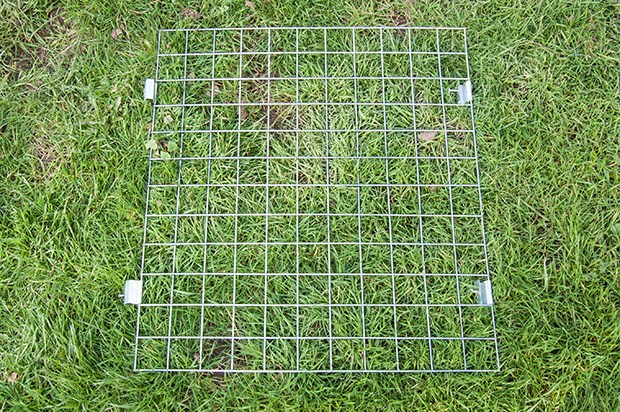

How did you get into DIY?
I think DIY runs in my blood. My parents were always working on projects around their house, from sewing to tiling to gardening. My mom taught me how to sew when I was in elementary school, and one summer the four kids in my family all helped my parents build a huge wooden deck. My paternal grandmother is the craftiest person I know, and she taught me to cross-stitch when I was a kid, and then when I was a teenager she taught me to knit, and my other grandmother taught me crochet. My grandparents lived in Michigan, and I grew up in Oregon, so we only visited them once every year or two, but when we did I loved going into their basement, because it was full of cool craft supplies and tools, like full-size weaving looms and a potter's wheel. An aunt and uncle in Idaho literally built their own house from trees they cut down and milled. I think all of these family members showed me that anyone can learn to do most things themselves. As I got older I just found myself wanting to try to learn how to do more things myself, and it kind of snowballed from there.
Are all of your ideas original?
Are any ideas original? Everything comes from somewhere! I don't want to copy anyone, though, so I always try to put my own spin on projects that inspire me, and add to them in some way. Replicating exactly what someone else has done is boring.
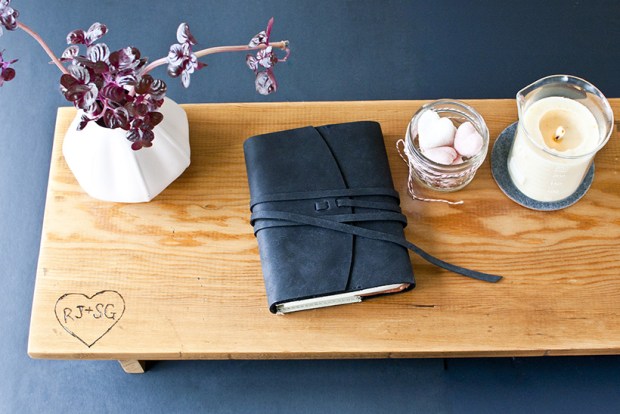
Where do you draw your inspiration?
All sorts of places! Blogs, Pinterest, magazines, shops, hotels, restaurants--there's inspiration everywhere you go once you start looking for it! When I'm out and about, I often snap pictures with my phone, and save them for inspiration.
It seems like a lot of the DIY projects call for tools that would not necessarily be found in the common home. How do you have all these tools? Are there any work arounds for people new to DIY-ing?
I actually try hard not to use tools that are hard to find. Aside from a few power tools, like a miter saw, power sander, and electric drill, I'd expect most of the tools I use to be pretty common. For the less common ones (like a tubing cutter, leather punch, or rivet setter), I've just gradually accumulated them over years of DIY. While you can buy pretty much any tool you want from the internet these days, some of my tools have come from places like thrift stores, garage sales, SCRAP, and the the ReBuilding Center. Put the word out to family and friends that you're trying to build up your toolbox, and you may even get lucky when someone is downsizing. Watch out for sales--my dad has all the tools I need, but I bought my miter saw and jigsaws during Father's Day sales. If a tool you need is too expensive, or you know you only need it for one project, see if you can borrow it from family or friends, or check one of Portland's tool libraries. They're a great resource that we're lucky to have here.
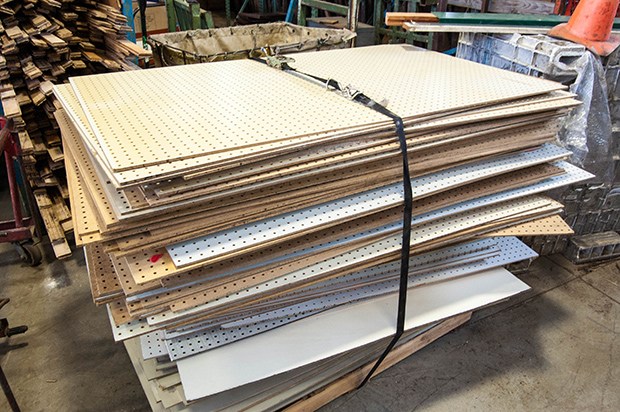
Do you sell any of your creations or are they all for your own personal use?
In the past I sold jewelry and accessories, but right now all of my creations are for personal use.
I see that you tend to incorporate a lot of used materials in your DIY projects, do you prefer to utilize used materials over new materials?
I love to use repurposed or used materials whenever possible, and I would do it even more if I could. The only tricky issues are that sometimes it's faster and easier to find the materials new, and since I blog my projects as tutorials, I need to try to use materials that other people can easily find, too. Plus, a lumberyard will cut wood to a size I can fit in my little hatchback.
What does creative reuse mean to you?
Creative reuse means looking for new and unexpected ways to utilize materials that might otherwise be thrown away.
Can you recall a time that you were especially creative with your reuse and saw the greatest transformation/change?
Geez, this is a tough one! My favorite transformations tend to be the ones that involve taking a castoff and making it into something I value. So what comes to mind is that recently I found some copper pipes from a neighbor's bathroom remodel on a curb, and I turned them into a plant stand. I also bought my wedding dress for literally $1 at a flea market, and altered it into a dress I love.
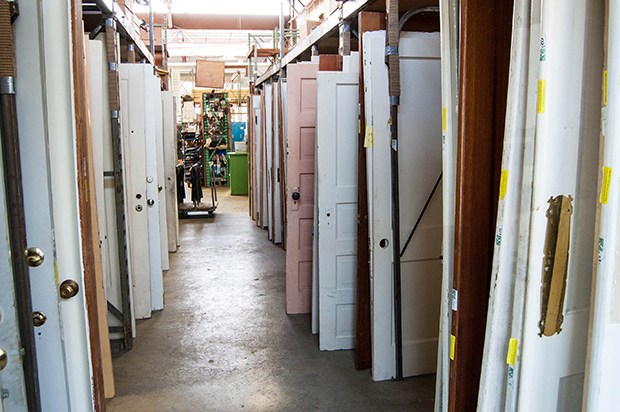
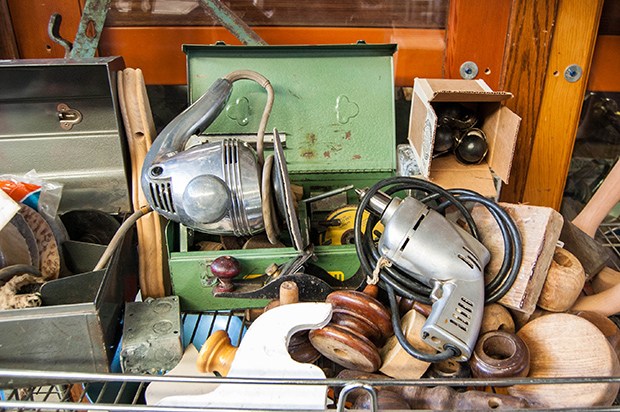
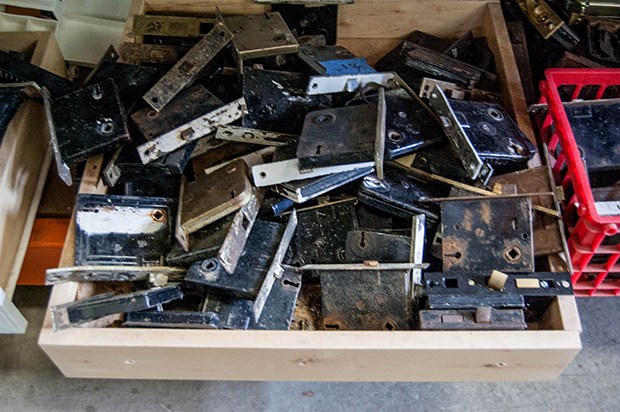
How did you hear about the ReBuilding Center?
I think I just noticed the distinctive building when I was walking down Mississippi, got curious about the interior, and wandered in one day.
Salvaged Wood Frames Showcase Local Artists Work in Pancakes & Booze Art Show
Local artist, Sean Lafferty, came to the ReBuilding Center with the simple desire to get involved. As an artist who lives in the area and who enjoys incorporating salvaged materials as much as he can in to his work, the ReBuilding Center has always been on his radar. Initially applying for an internship position, Dave Lowe, the Volunteer Services Manager, sat down with Sean to gain a better understanding of what Sean would like to do. Following this conversation, the two decided to make use of Sean’s artistic talents in the woodshop and thus began an apprenticeship with ReBuilding Center’s skilled frame-maker, Chris Lambert. After learning the art, working with the old-growth wood, Sean created his own beautiful frames for his artwork to show in the Pancakes and Booze art show that took place last Friday, June 10th where I was able to chat with Sean about his work.
Sean’s says a desire to keep Mother Earth healthy has inspired a passion for reuse. He was influenced at an early age by his father, an engineer, who built an electric car in the 1970’s. In the past he has used cardboard and paint pens as a medium and consistently tries to incorporate reused and natural materials in his work. Sean recalls an early encounter he had incorporating salvaged materials into his art: he found some chip board at a construction dump, took it home and cut it into a frame for one of his pieces on cardboard and finished it off with some used plexiglass. About his aesthetic, Sean says, “used material adds another element of earth and another element of existence.” Sean believes that sometimes the most creative things come from being confined by the materials themselves - it throws something into the process that the artist has to work around to complete their vision and make something beautiful.
Although Sean had some experience as a kid in his family’s woodshop, he claims to have no real wood working experience prior to coming to the ReBuilding Center. Partnering with Chris Lambert, Salvaged Specialist at the ReBuilding Center, Sean was taught everything from the ground up about woodworking and building frames. All the pieces at the Pancakes and Booze art show feature his artwork in pigmented Indian ink and is showcased in these reused frames. Sean shared how Indian ink presents its own challenges because it must be diluted with water to get the desired shade of a particular color.
For example, you can see all the different shades of color the come from diluting the blue ink background around the oak tree in the framed image on the top left.
Sean featured seven different pieces in the Pancakes and Booze art show, most of them depicting different species of trees. Sean explained that the work featured in the art show honed in on two specific topics: “personal change” and “the development of an idea.” For example, the piece of the butterfly undergoing metamorphism represents the process of turning into one’s most fully realized self. In Sean’s tree species series, you can see a seed at the root of each tree. From each seed a massive life form flourishes, which represents the initial “seed” of an idea planted in your mind as it grows into its full potential.
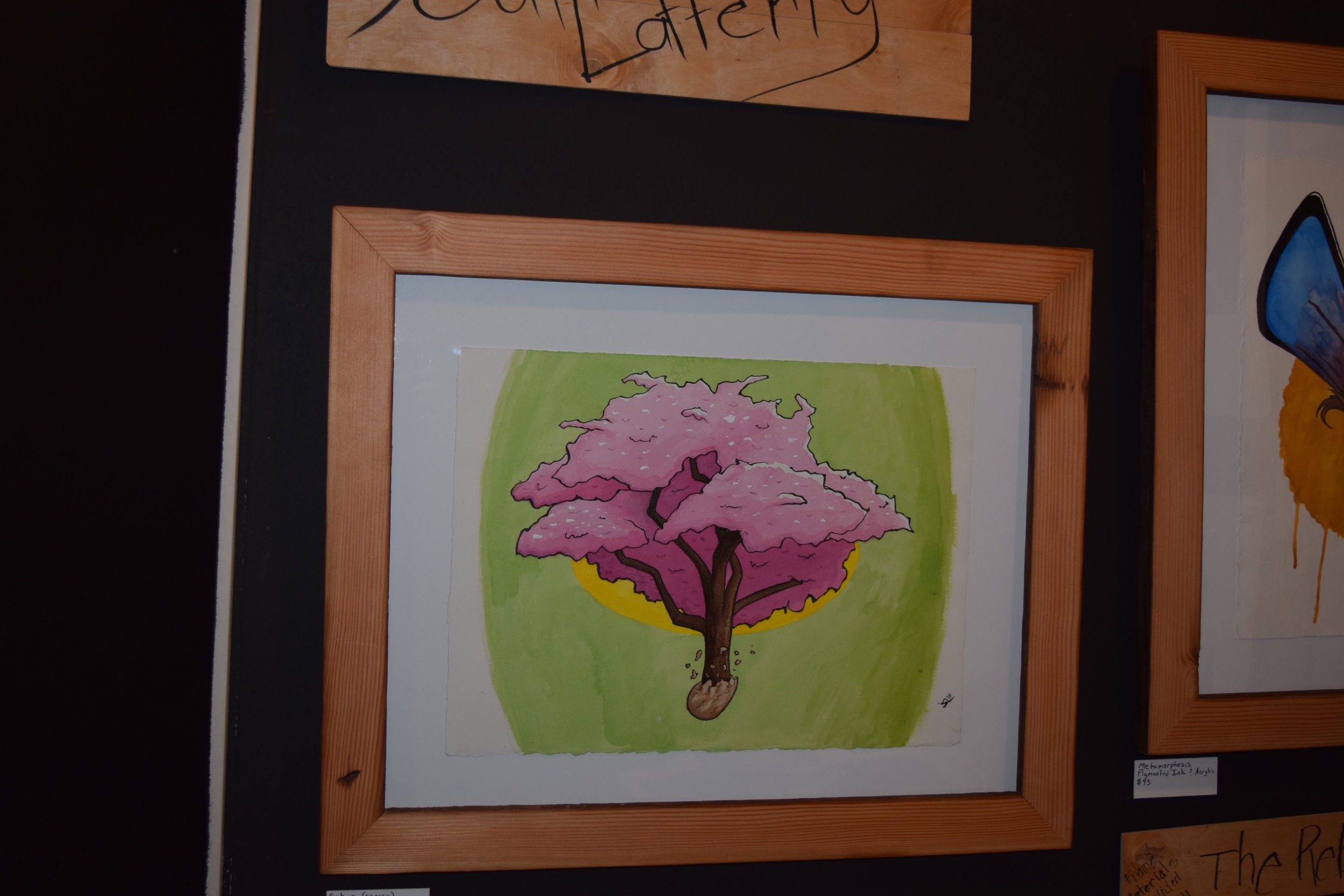

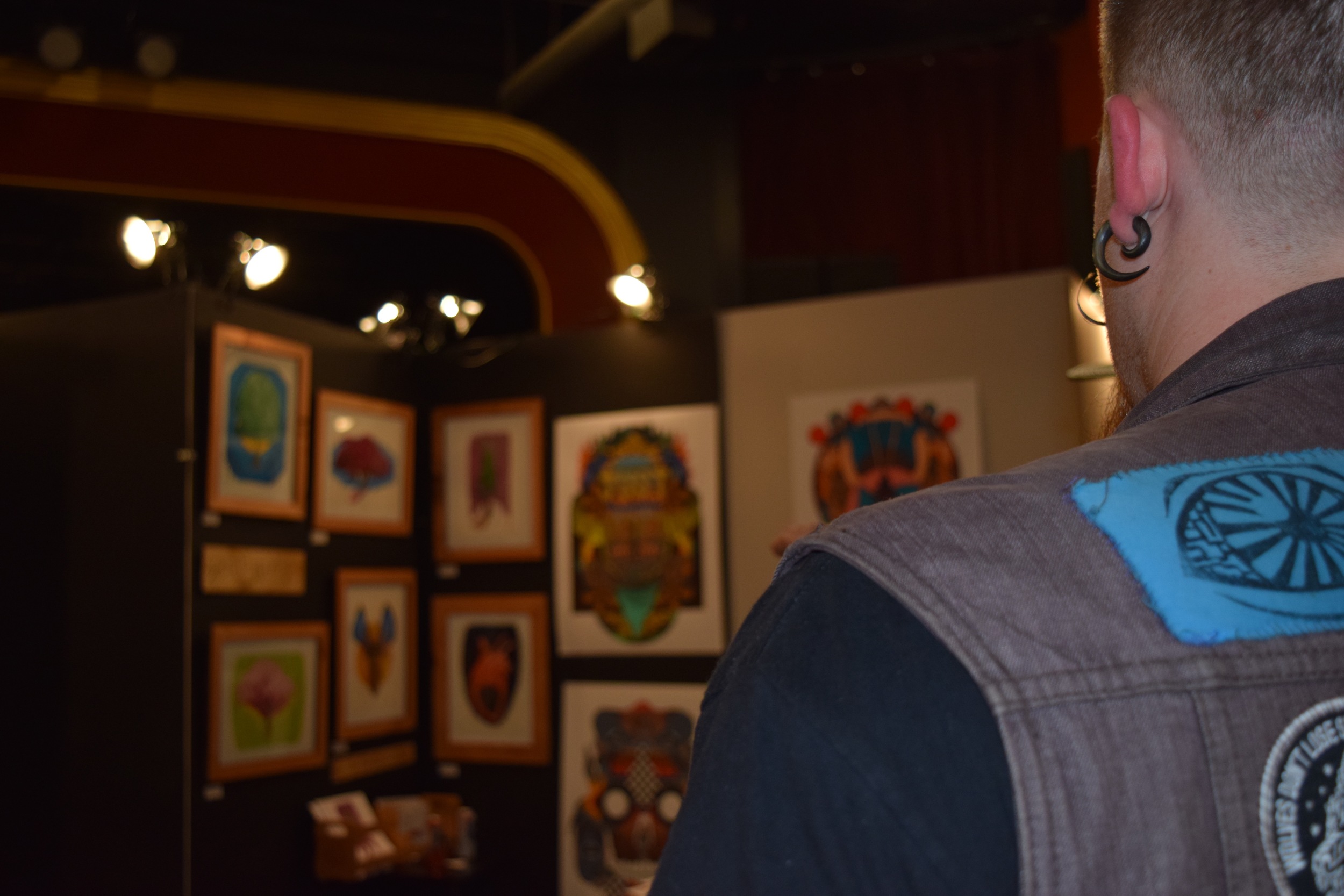
This event marked Sean’s third Pancakes and Booze show where he has shown his artwork. Pancakes and Booze is one of the largest pop-up underground art showcases in the country. The event occurs every six months or so and has taken place in over fifteen cities across the nation with the aim to give local artists a pedestal to feature their art outside of the corporate structure.
PDX Carpet Lives On
The already challenging project of replacing the 13 acres of beloved carpet in the Portland International Airport was complicated even further by the Port of Portland’s ambitious "Five Years to Zero Waste" plan which called for waste diversion of 90% or greater. The “zero waste” initiative caused the Port to maintain sustainability requirements at the forefront of the carpet replacement project and in doing so was able to discover enough different outlets of reuse to recycle all 13 acres of the PDX carpet.
With the original plan to send the carpet to a waste to energy (WTE) facility, 5 acres of the carpet ended up being repurposed as furniture upholstery, batting cage turf, flooring in local buildings and a variety of other novelty goods. The remaining 8 acres of carpet were sent to a facility in California that recycled carpet fibers to make carpet pad. Even when installing the new carpet the Port continued to recycle the rest of the project’s waste.
To learn more about the carpet replacement project and how reuse can be incorporated to a construction project of any size click the button below.
Day of Service: RBC & AAAH help stem displacement of long-term homeowners in N/NE Portland
The ReBuilding Center in collaboration with the African American Alliance for Homeownership (AAAH) began an inaugural “Day of Service” this last Saturday, June 11th, an event that helps stem displacement of long-term residents of N/NE Portland. Staff from the ReBuilding Center and AAAH as well as dozens of volunteers showed up bright and early on Saturday morning, coffee in hand, to get going on some home repairs for members of their community. We focused on five different projects ranging from cement pouring to yard work to house painting. It was a powerful experience to be able to talk to homeowners and hear their stories, perspective on the development of the area, and about the complexity of issues surrounding gentrification.
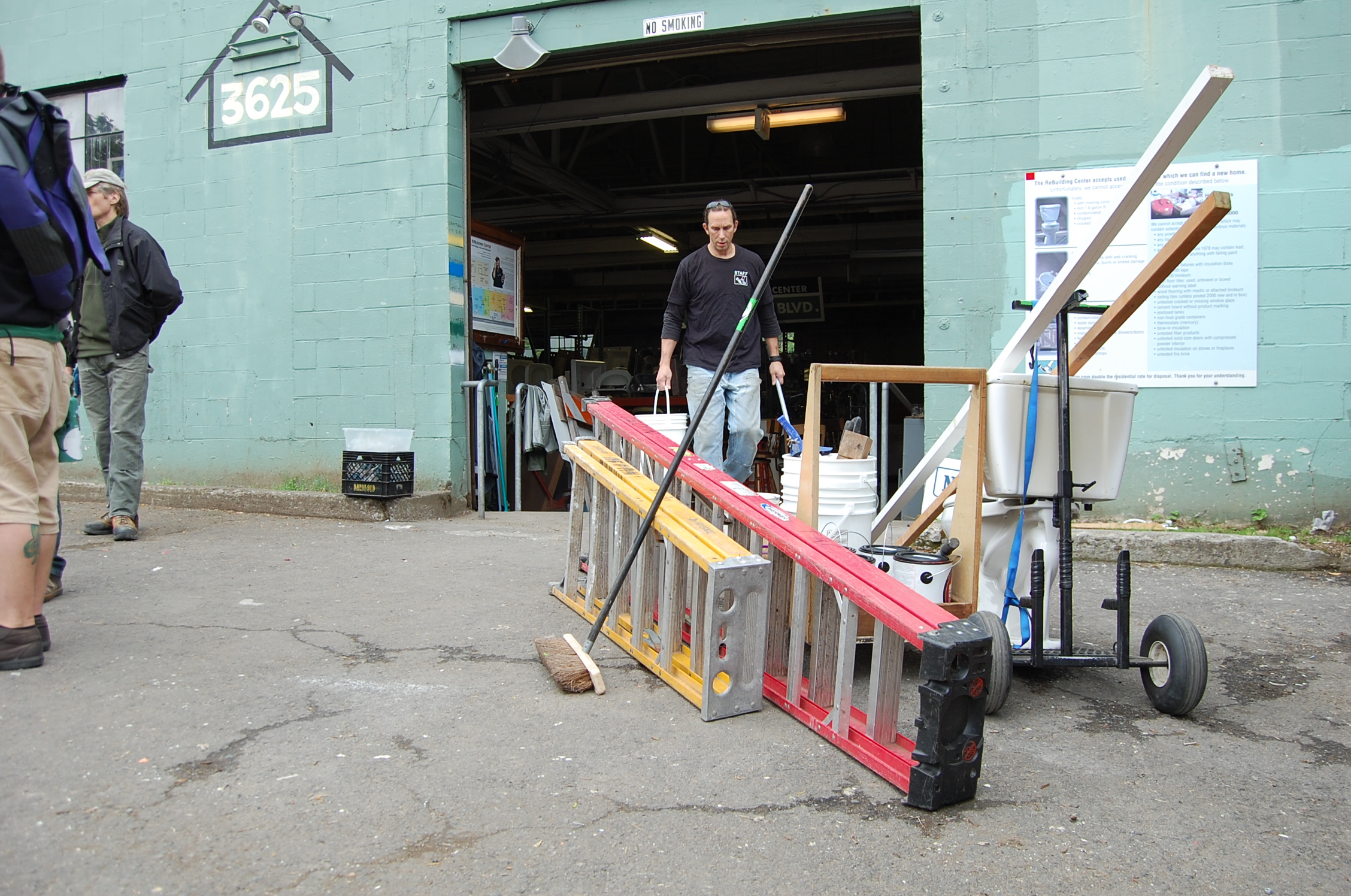
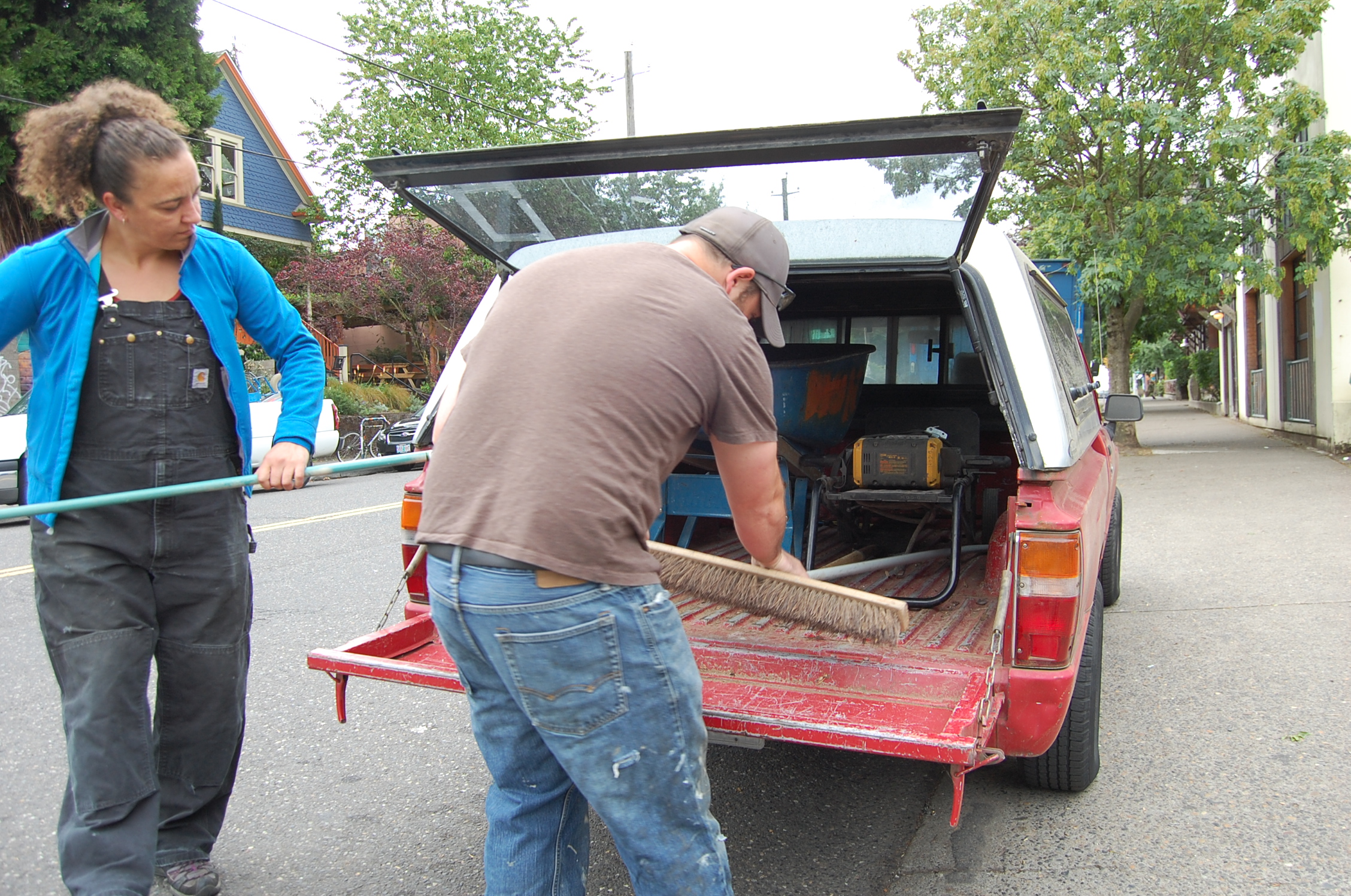

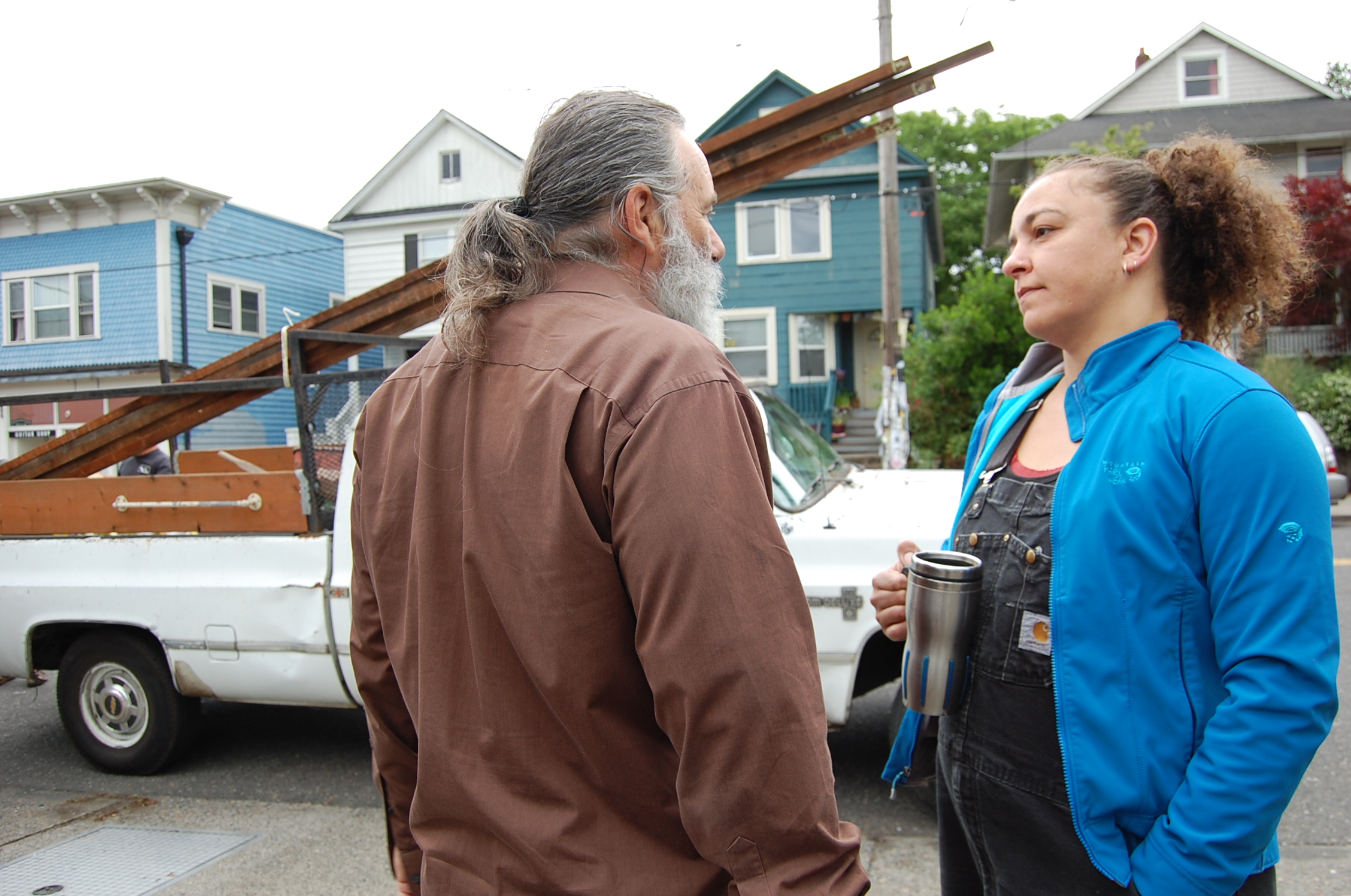

Ruth
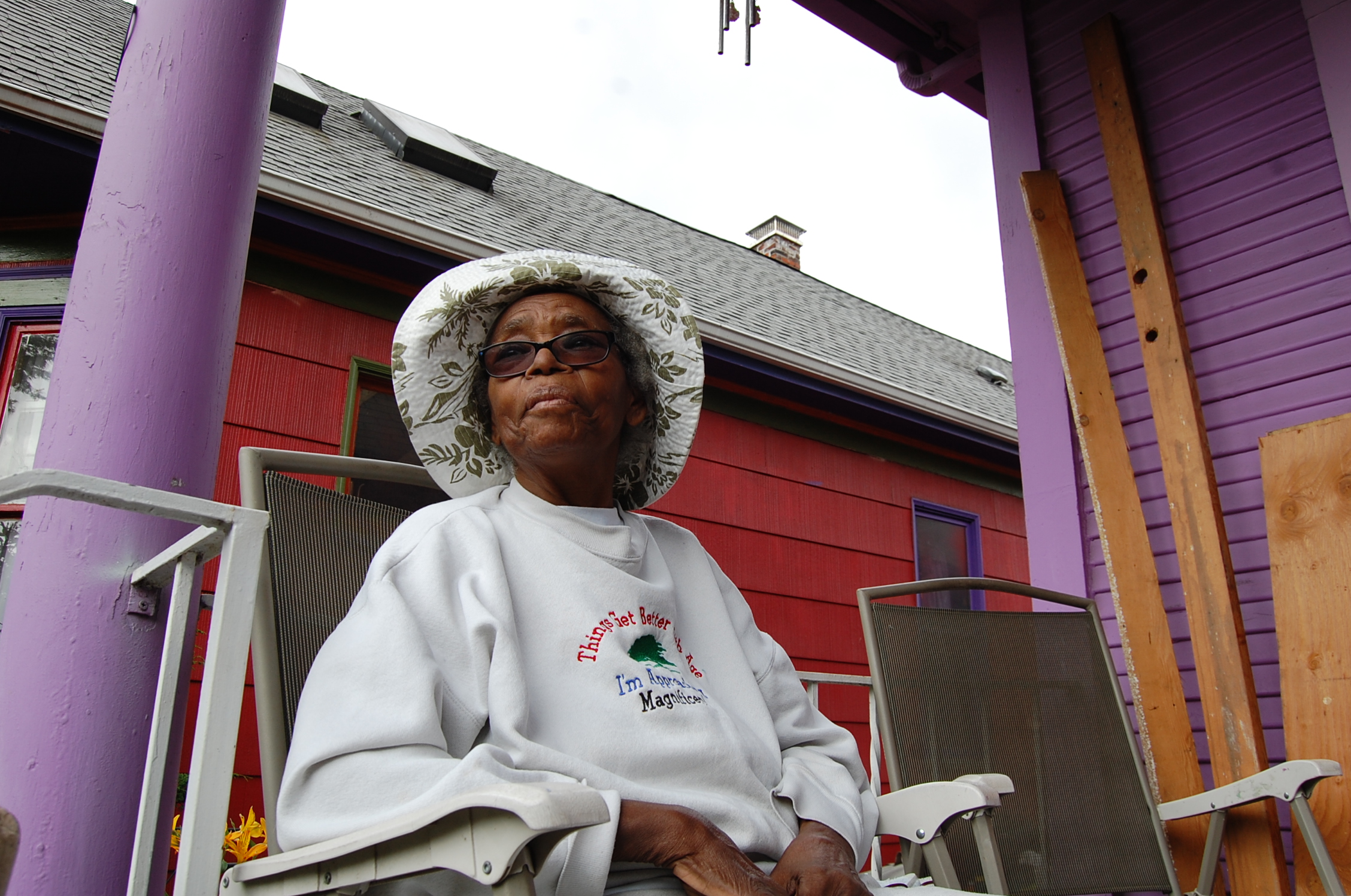
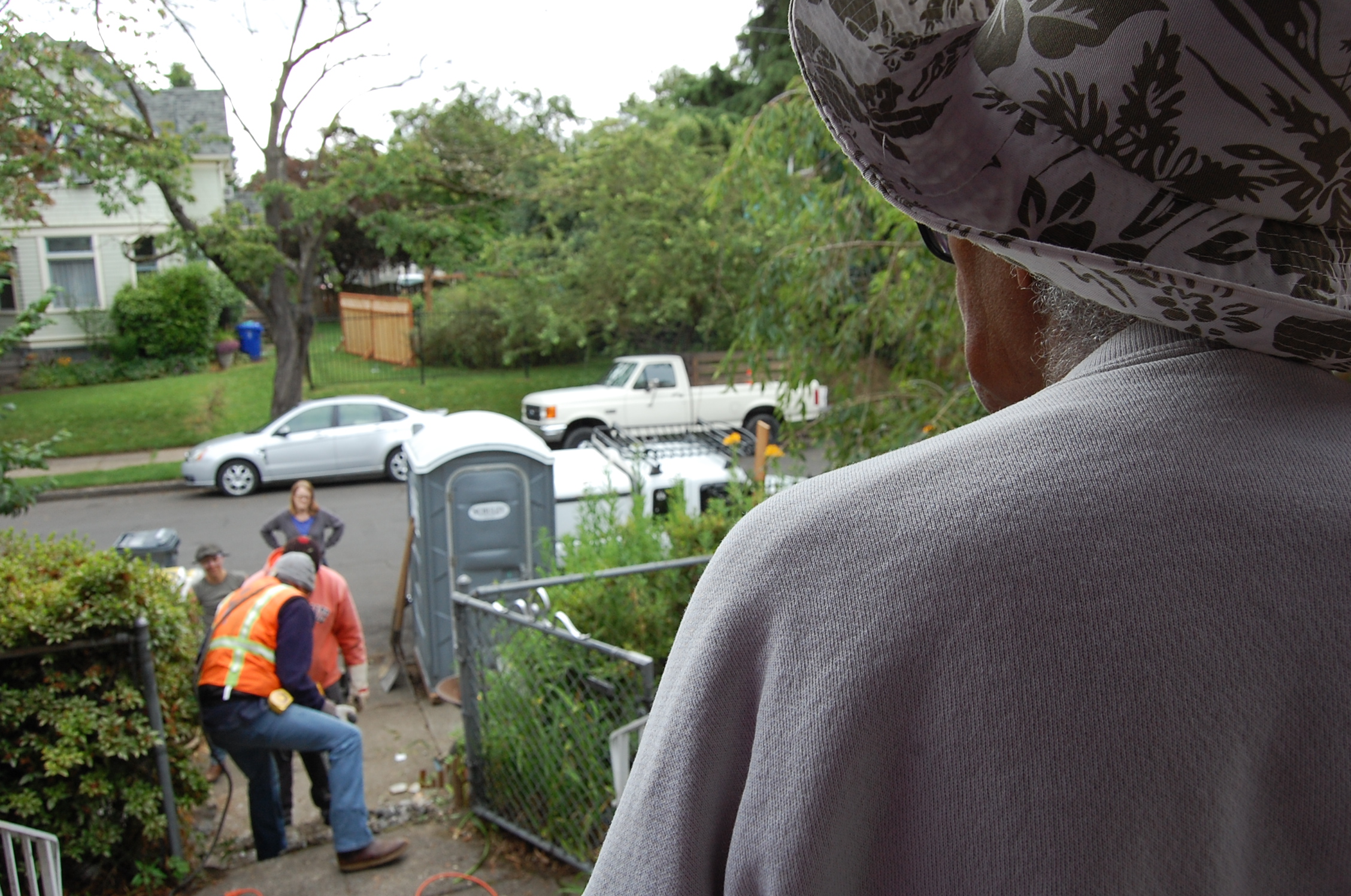
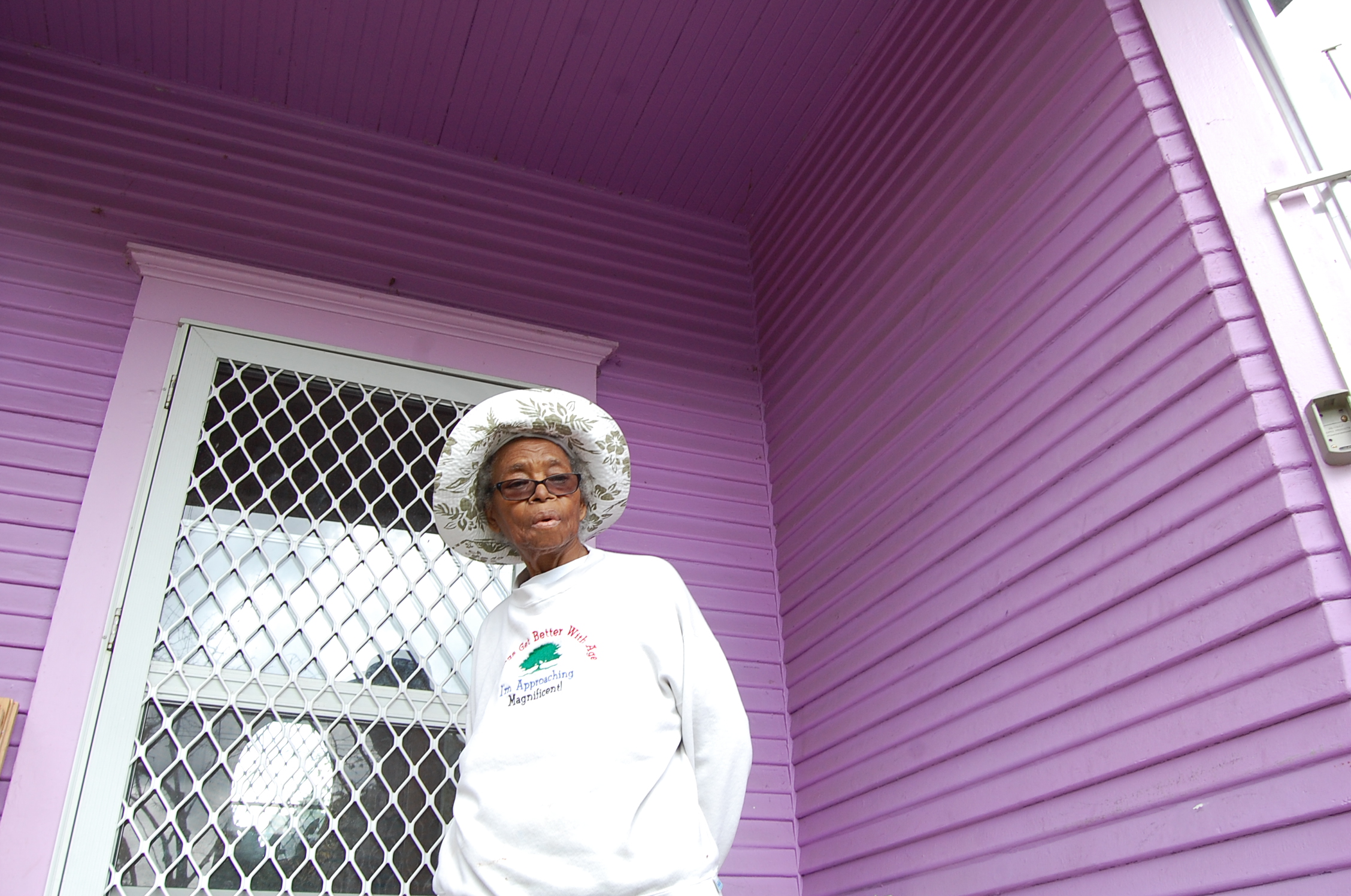
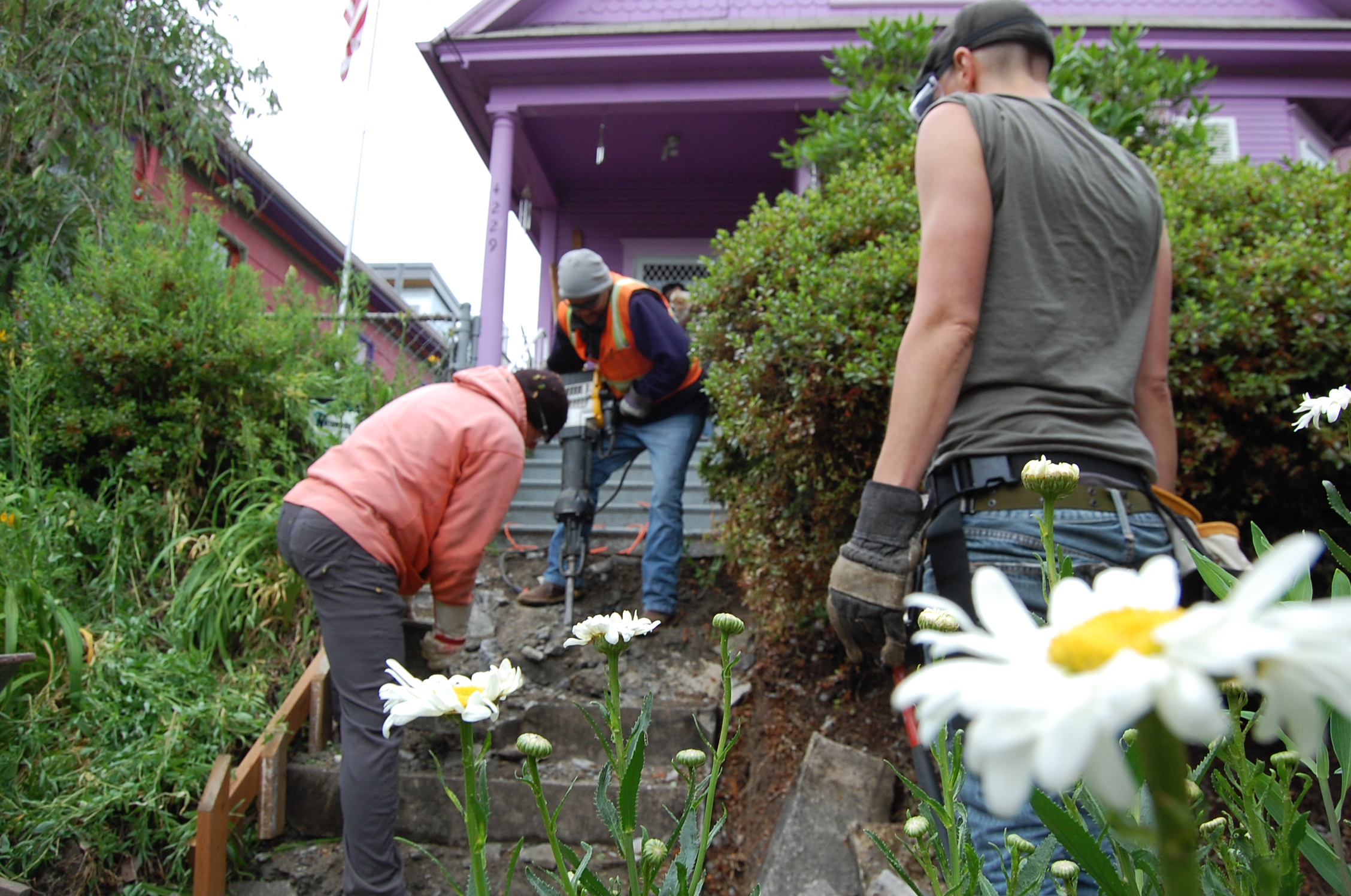

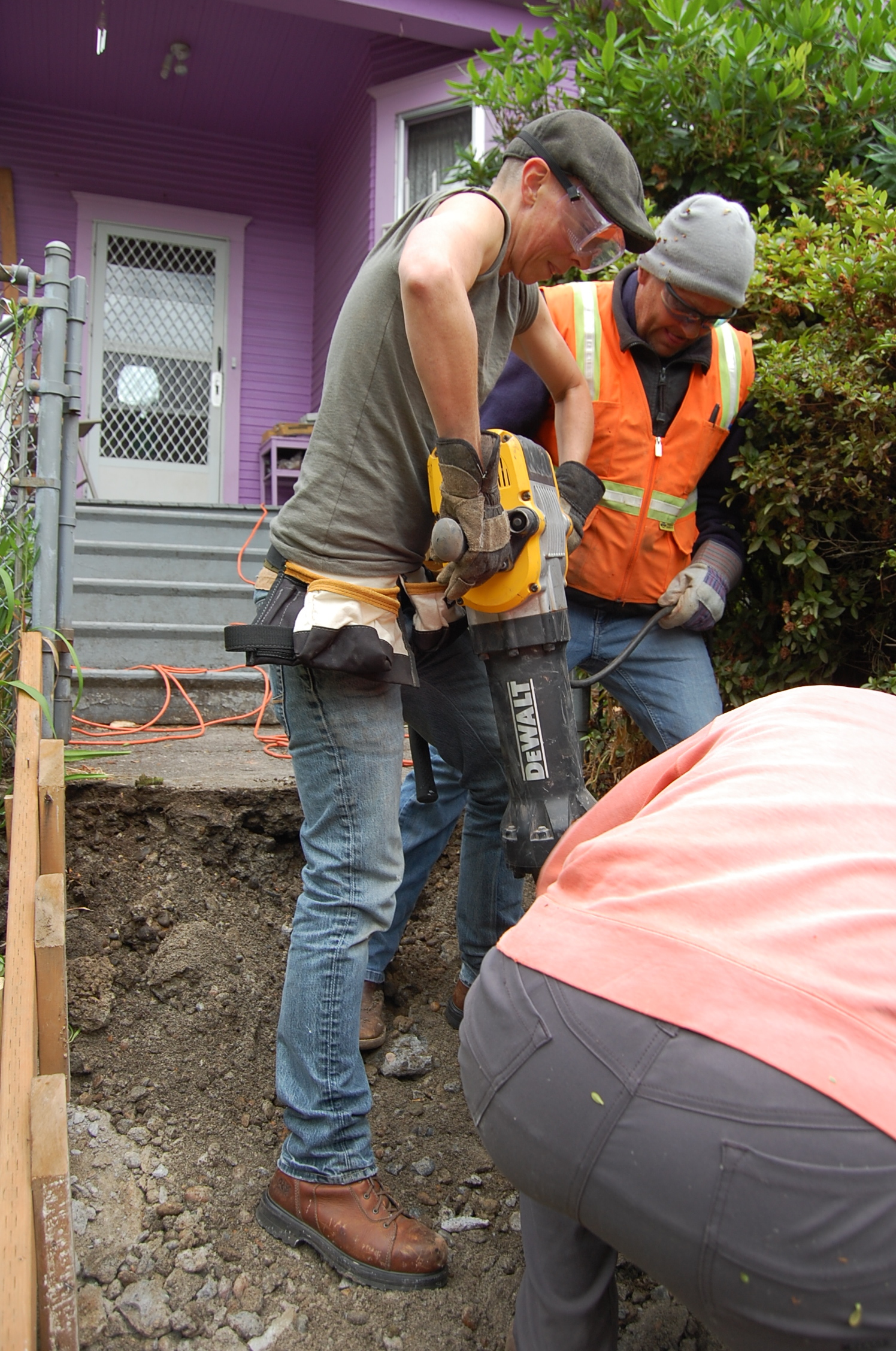
Since 1958, Ruth has seen her neighborhood transition through three distinct phases. When she first moved into her home 58 years ago, she remembers the area as a vibrant community where you could find everything you needed from food markets to a 10 cent store. She then witnessed the street experience heightened crime rates due to a stronger gang presence. Now she refers to the streets as “clean” and has seen the area turn into a once again bustling neighborhood. And no, she doesn’t want to sell. Every week she receives offers, people trying to buy her home. How could she leave her beautiful lavender home where she’s raised her kids and grandkids? With age, it has become increasingly difficult to keep up with the house and the garden. Years ago, during an earthquake, the cement stairs leading to Ruth’s home broke and it’s been hard for her to get down the stairs ever since. ReBuilding Center staff and volunteers were happy to lend their skills to fill her new cement stairway.
Pat
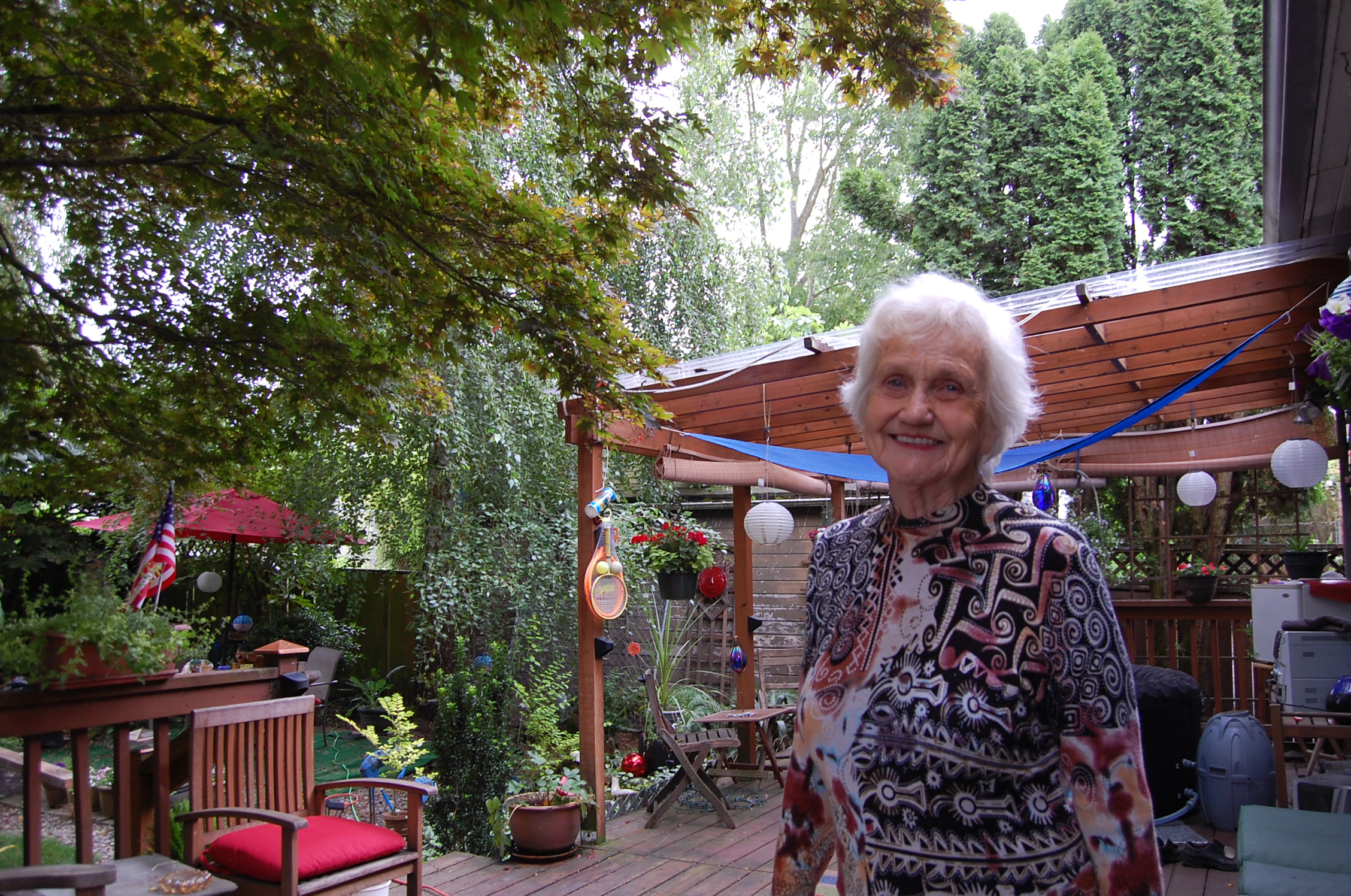
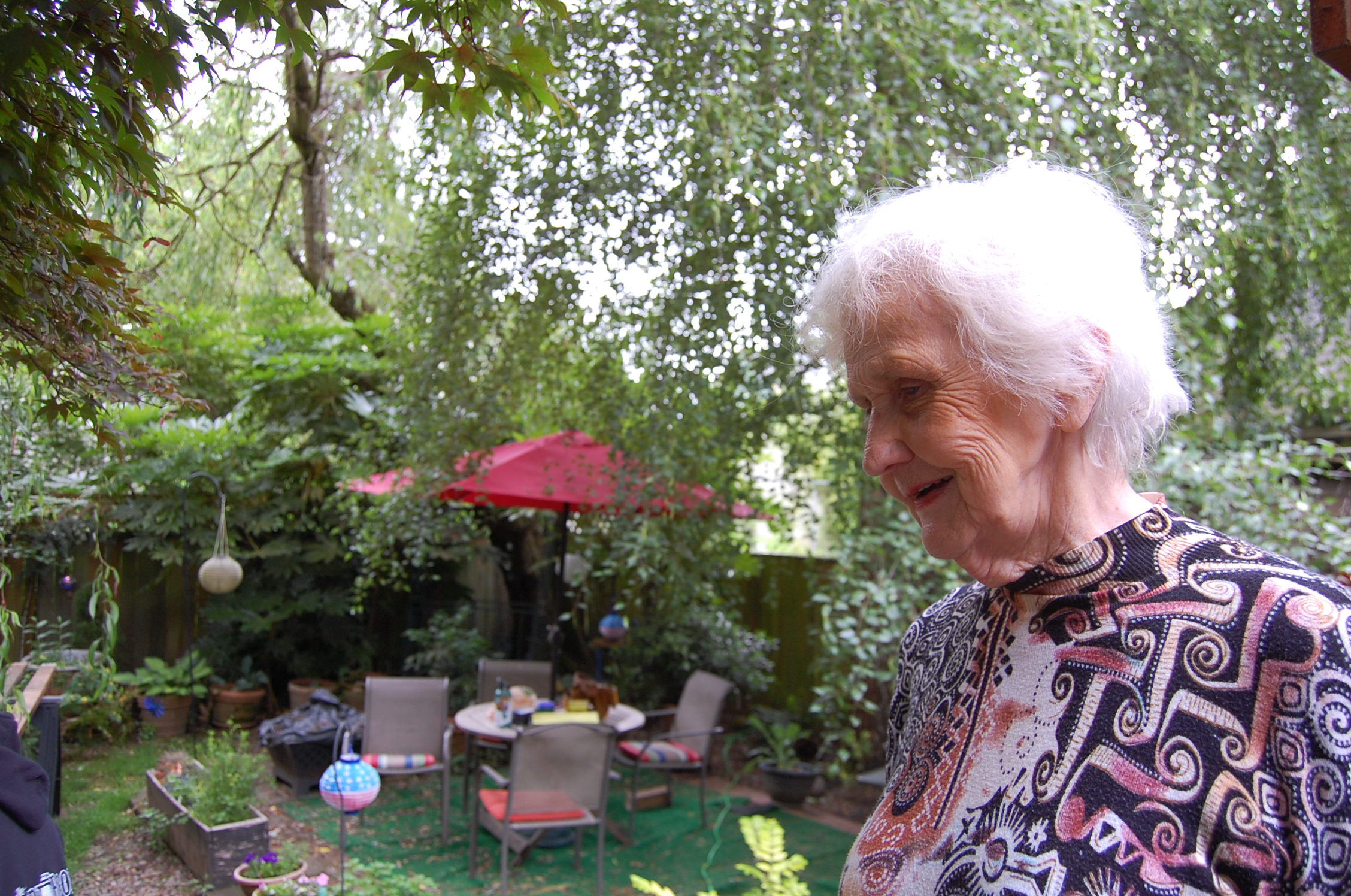
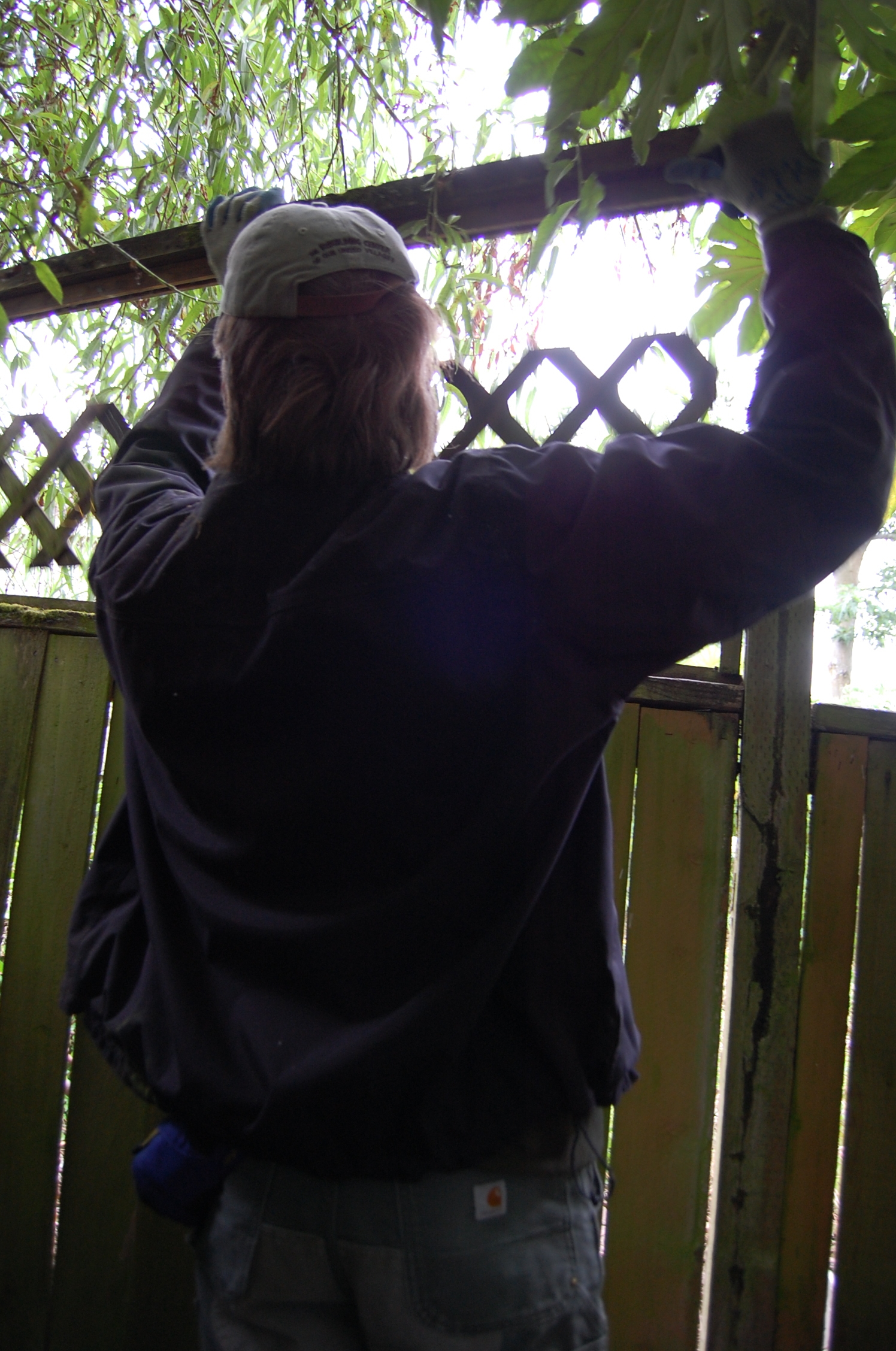
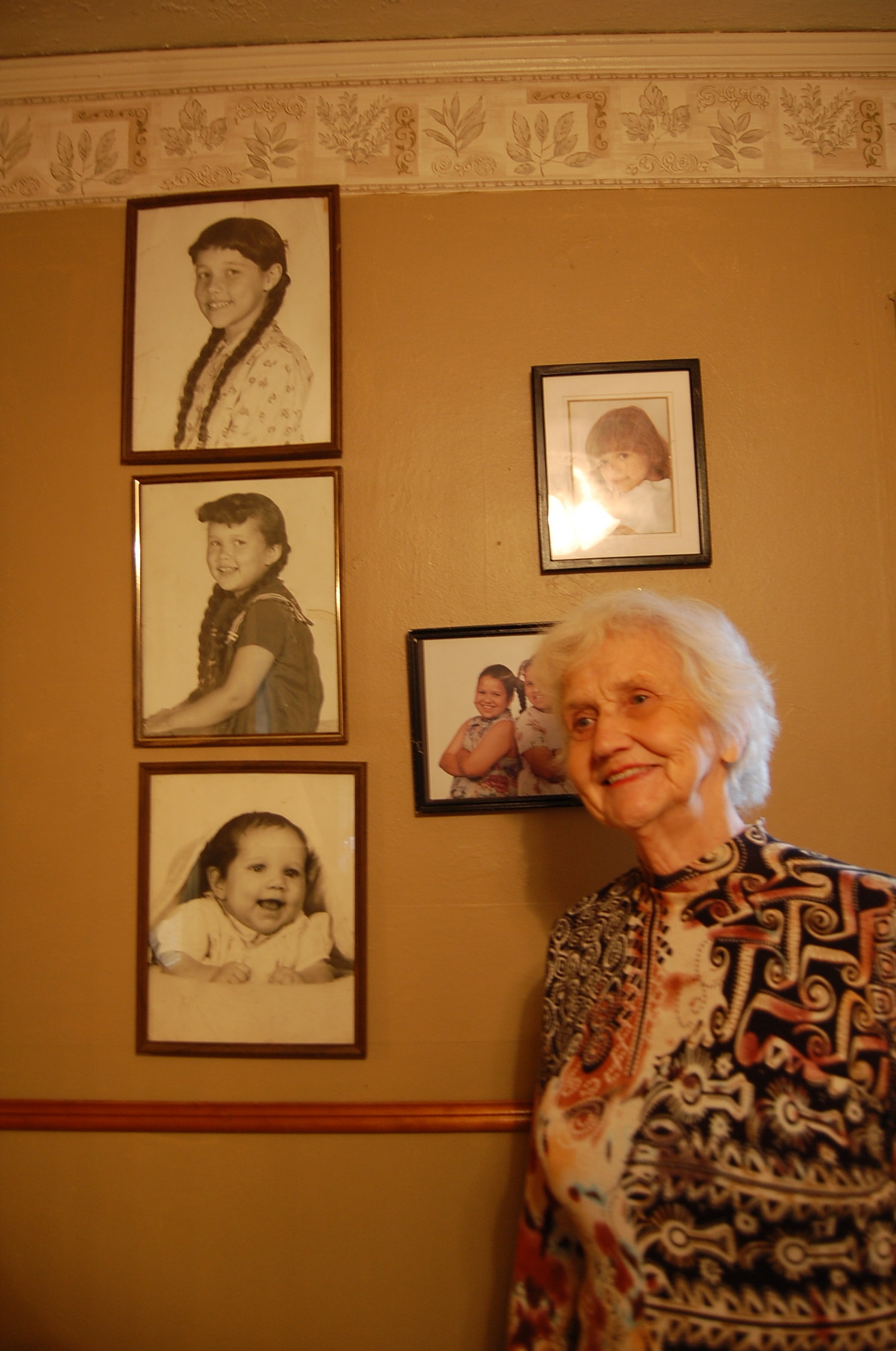
Pat is a real firecracker. Her creative and whimsical design sensibilities show throughout her home and yard. We helped Pat with her backyard, repairing a fence that she hasn’t been able to fix because of her arthritis. Pat loves to walk and reminds us that “it’s just as important to keep your mind as active as your body when you’re older.” Pat’s lived in her house for over 42 years and can count on one hand how many long-term residents still live in her surrounding neighborhood. “Everybody’s been pushed out,” she says, “it’s strange to see how much change has happened in our neighborhood.” A perk of the new development? Pat enjoys frequenting the new restaurants popping up in her area, serving hip and affordable fare during happy hour.
Elaine & Milhouse
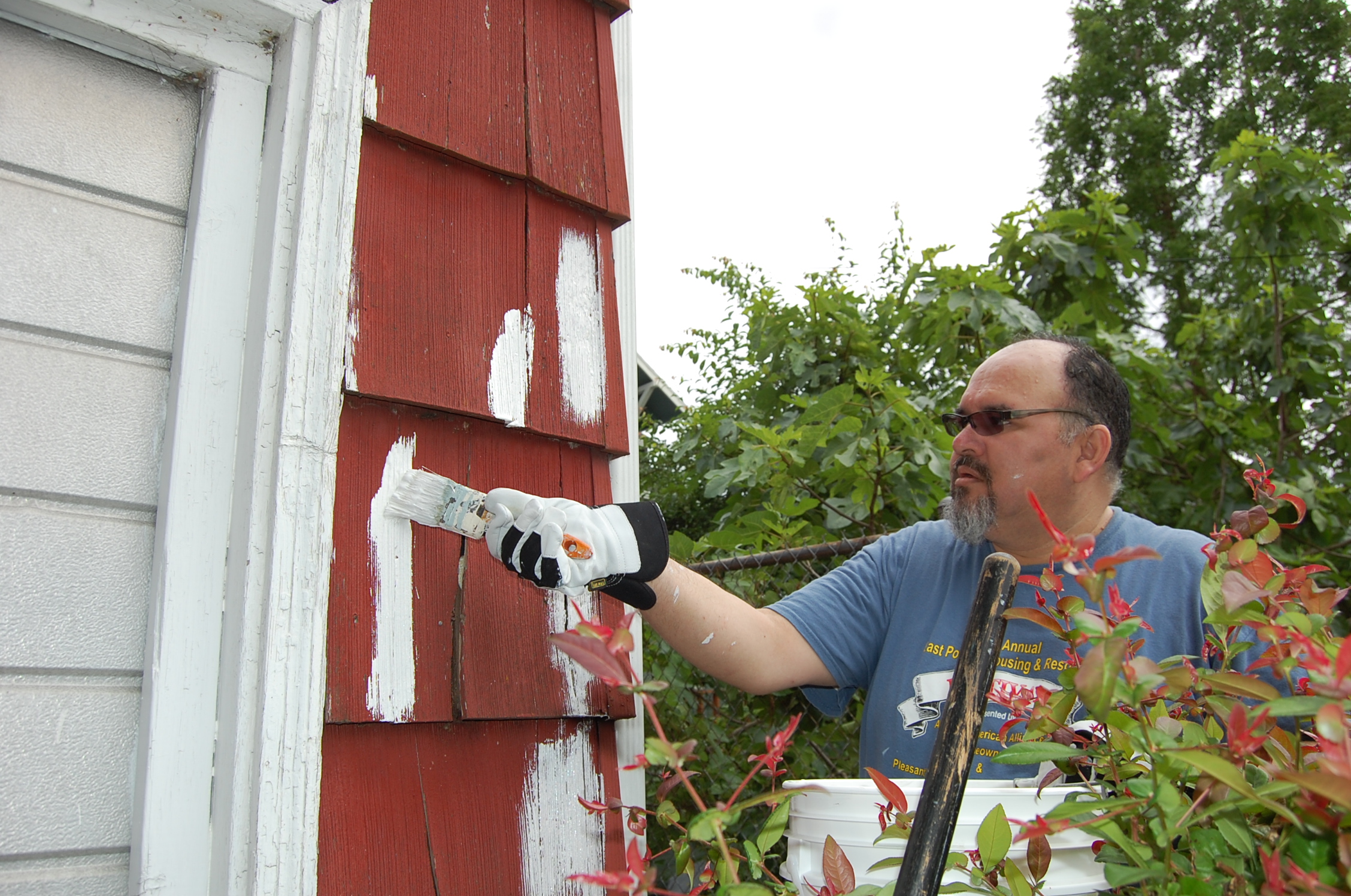
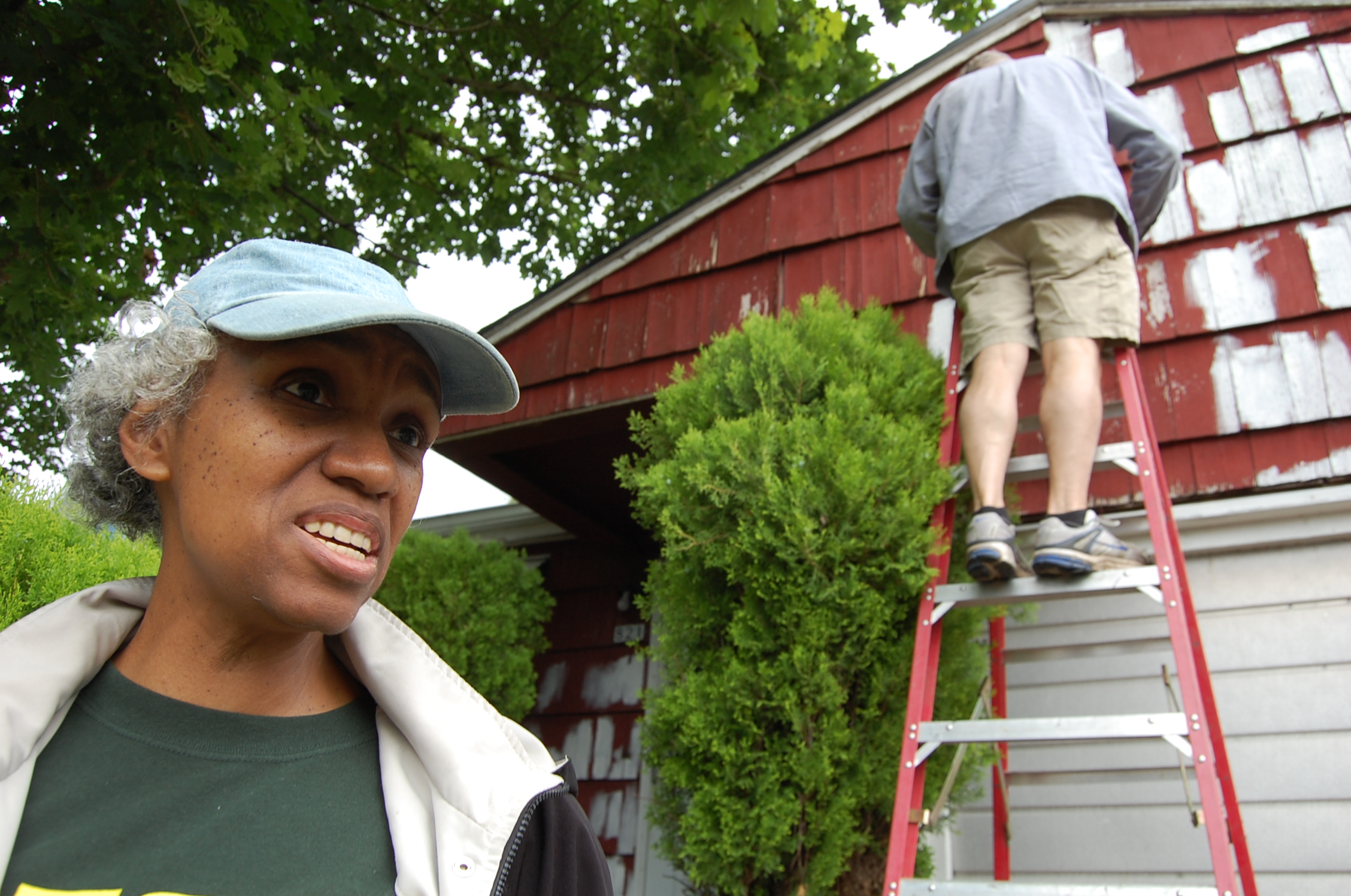

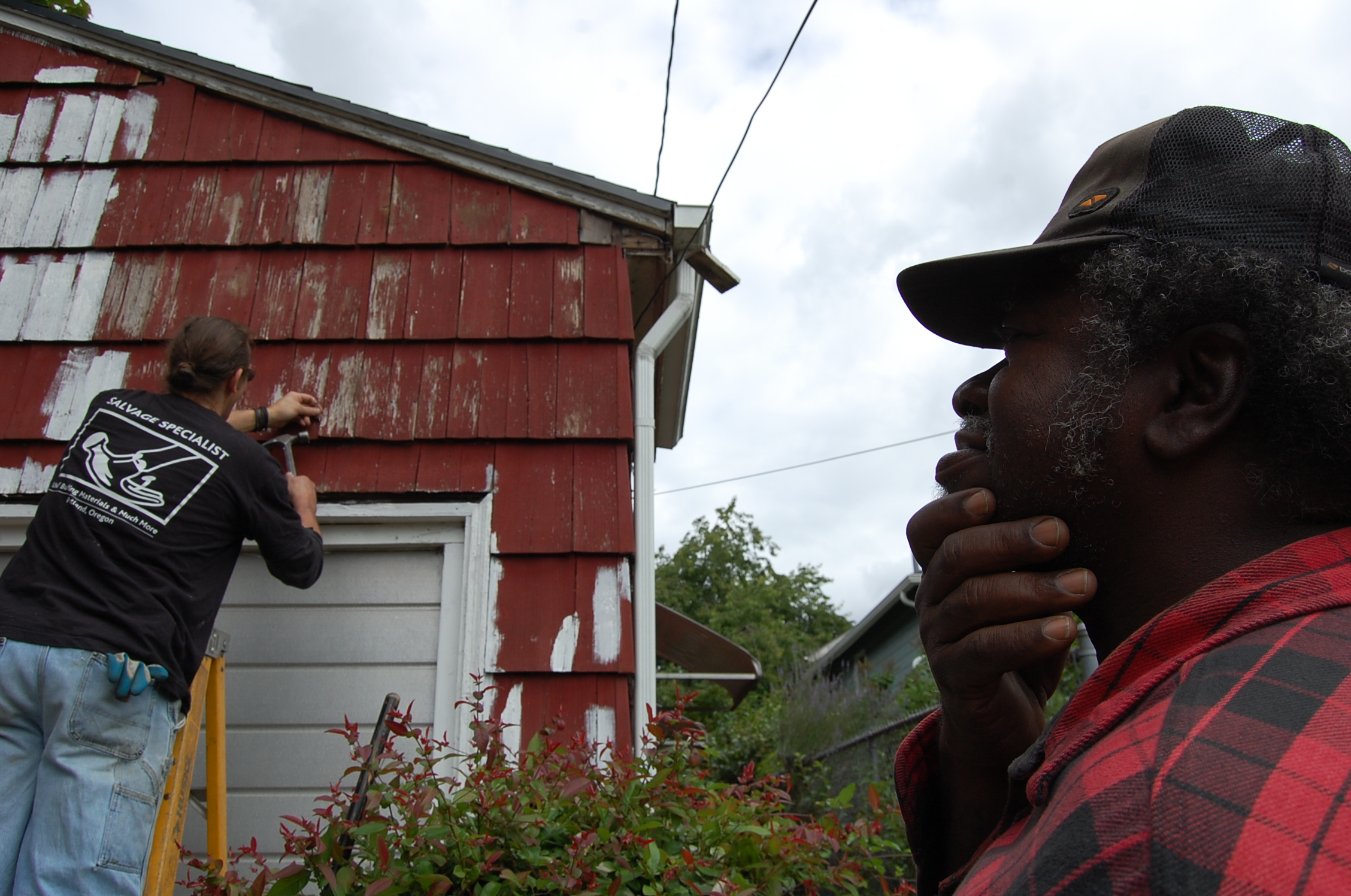
Elaine & Milhouse bought their home back in 1991 and they have been wanting to touch-up their house paint for a while now. They feel like their home stands amidst the freshly re-done houses popping up next door. Within the last ten years, they say the worst part of the rapidly changing environment is the traffic on their busy street. Several parked cars have been hit. And although they’ve developed relationships with their new neighbors, Elaine says, “it doesn’t make you feel good when you don’t know your [old] neighbors anymore.” With Elaine’s full-time schedule as a care-giver, and both of them getting older, it’s hard for them to keep up with repairs. We were happy to meet some of their needs and get to know our neighbors!
Carly
Carly was the youngest of the bunch but still stood witness to the dramatic changes to the neighborhood. She says, “it’s weird, every time I even drive to the ReBuilding Center, I see new stuff. Things are popping up so fast.” She believes it’s important to keep neighborhoods diverse. She tries to see all the change as positively as she can but wishes that it didn’t mean destroying what was already there. Carly doesn’t want Portland to look like every other city. She grew up in Portland and feels like it breeds a certain kind of nutty person. With affordable housing becoming more and more scarce, she worries about our houseless populations, especially families because of how hard it would be for them to adjust. Working at Kruger Farms and doing all of her own home repairs (using almost solely materials from the ReBuilding Center), Carly’s thought about renting out her house but doesn’t have very many options to choose from. It was a pleasure to help out with a few projects that required specific skill sets, such as cementing and rerouting a drain pipe.
ShaRee
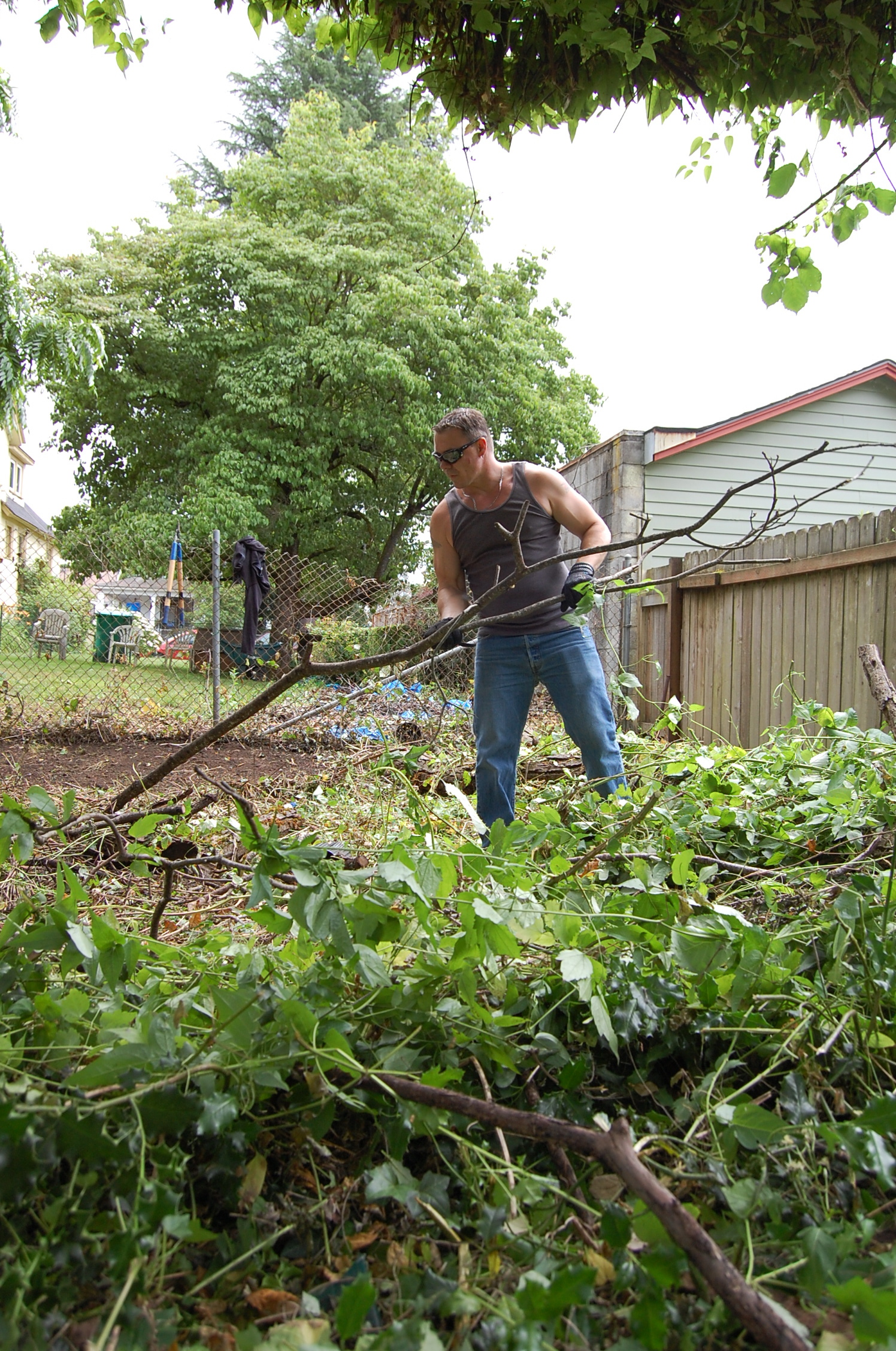
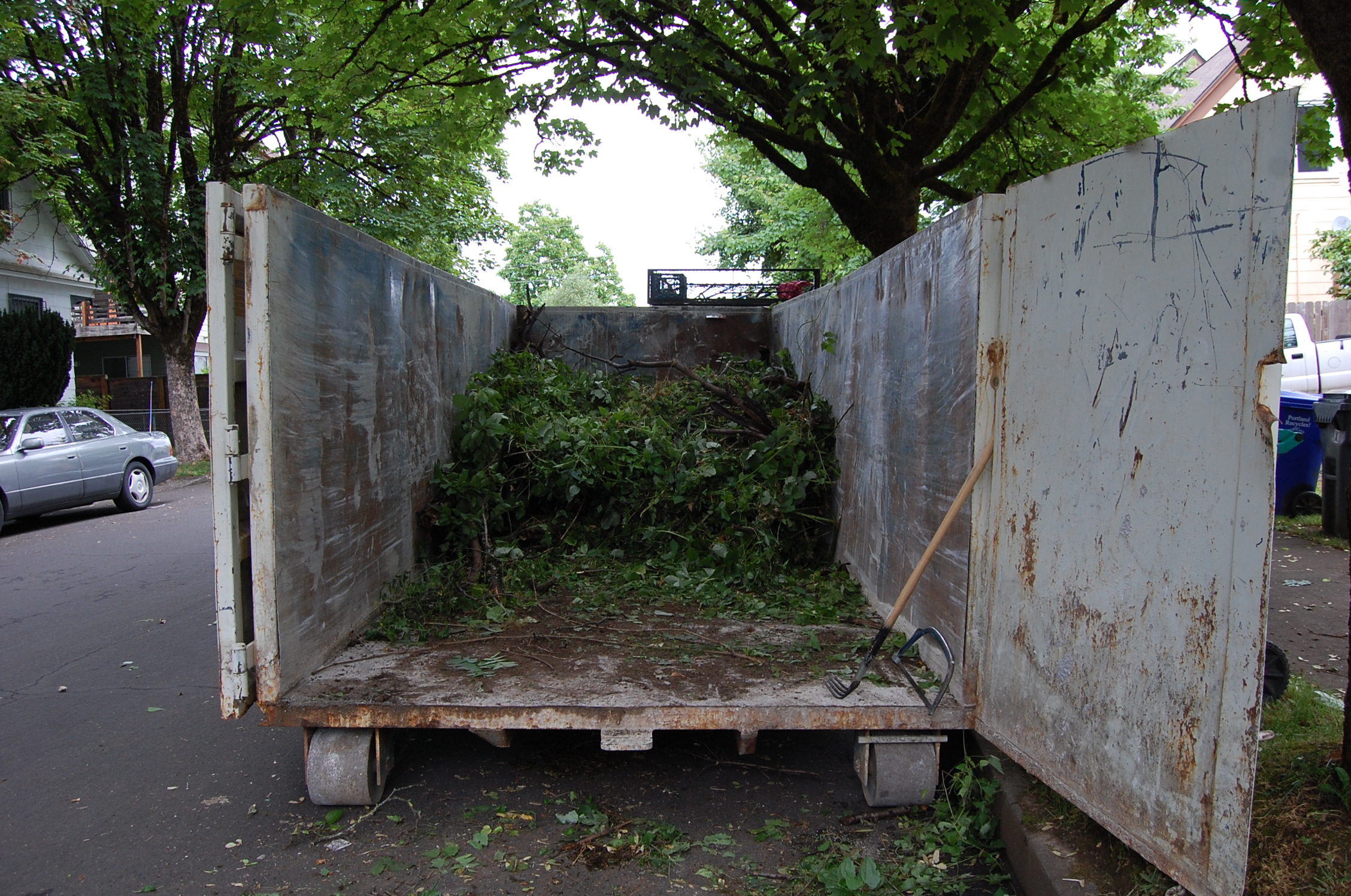
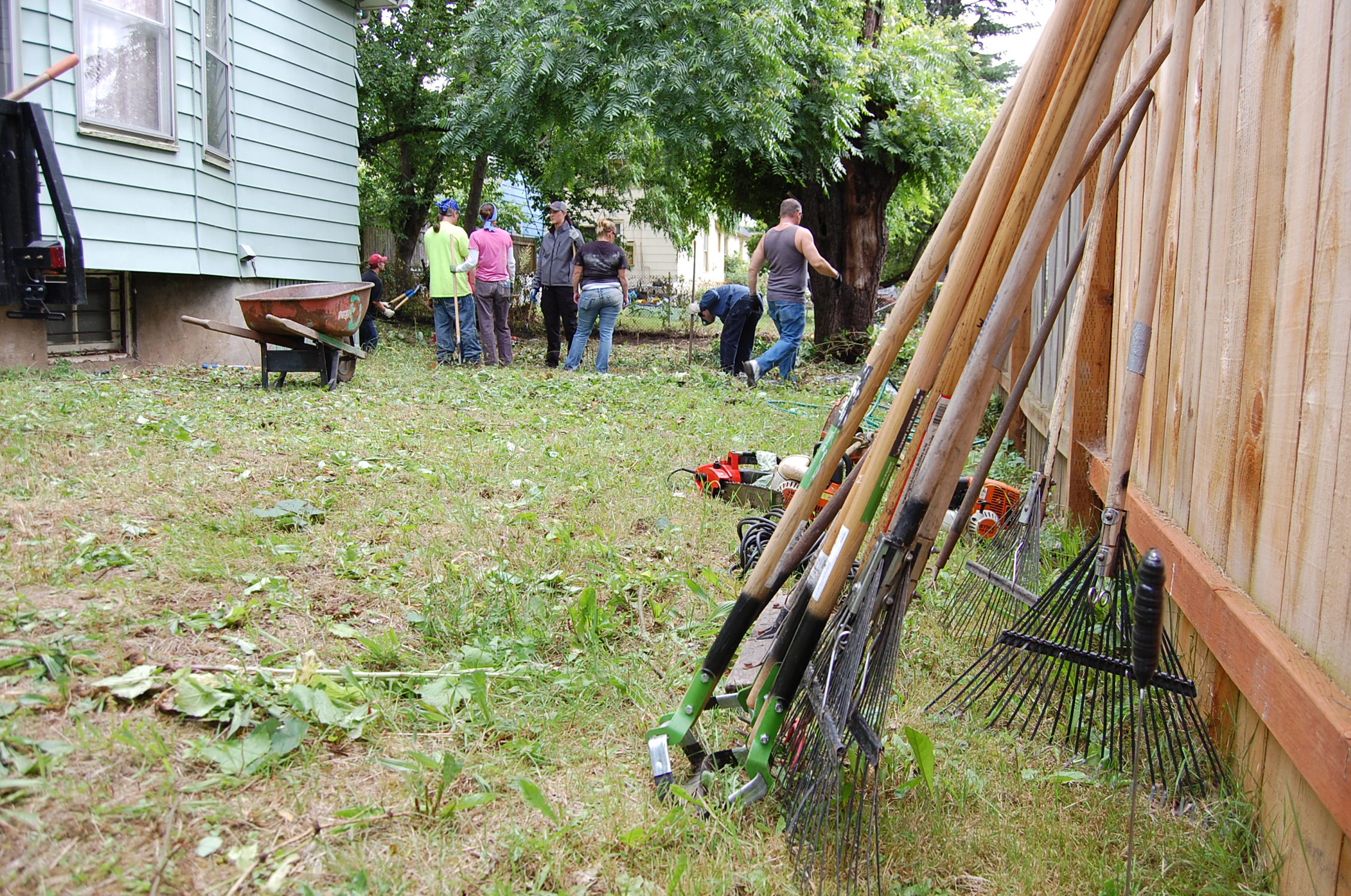
We also served another long term resident named ShaRee with her backyard. Twelve crew members weed-wacked and trimmed their way through a backyard jungle, yielding impressive results.
A big thank you to City of Roses Disposal & Recycling for the drop box, Metro for providing paint, brushes, and a voucher for the drop box at Metro Transfer Station, Oregon Deli Co. and Mississippi Pizza Pub for their generous donations to feed all the volunteers and staff, as well as Stormbreaker Brewing, who provided a nice discount for the wrap-up celebration!
The Day of Service was so successful that we would like to make it a regular event!
If you are interested in getting involved, please contact Dave Lowe at dave@rebuildingcenter.org.
What will you (re)make?
Creative Reuse of Our Community
We want to share a few of the many amazing creative reuse stories from the people of our community. Below you will find five brief tales of how creative reuse ideas came to life.
Submit your own creative reuse ideas for 10% off your next purchase*.
Vote for your favorite reuse idea below and the winner will receive a $50 gift certificate!
Desks of Doors
The new Portland team of Eugene-based tech company, Sheer ID, has a tradition of making desks out of doors, so when the company opened a new location in NW Portland, they naturally had to carry that tradition. Repurposing doors all found at Rebuilding Center, the Portland team was able to create more door desks full of character to make them feel at home in their new space.
Life-Size Lincoln Logs
A recent customer, Gary, was asked to build a play structure for his niece using pre-made plans that were purchased. Once built, Gary realized how plain the structure was and decided to repurpose some materials he found at the Rebuilding Center to give the structure a more customized look, making him a hero to his niece.
Rebuilding Center Facelift
This is one of the latest and greatest daylight basement projects of ReBuilding Center patrons, Ruth and Joe. Using 10+ antique light fixtures, 6 framed doors that matched the original doors (with hardware included), french doors, 3 louvered doors, clear vertical grain for fencing, a pedestal sink, a low-flow toilet, brass door hinges, and more, the pair was able to restore their second home with salvaged materials sourced from the ReBuilding Center warehouse.
Kitchen Table Fit for a Farm
Wendy and Joshua are owners of the Odd Man Inn Animal Refuge in Washougal, Washington, which is home to over 80 cute critters and now a new farmstyle kitchen table that Wendy created entirely from repurposed wood found at the ReBuilding Center.
Father & Son Duo
Mario and Teddy are frequent customers of the lumber yard here at the ReBuilding Center, collecting materials to create beautiful tables out of salvaged wood. Typically the duo sell their masterpieces but word has it they may be donating one of these beauts to the ReBuilding Center soon so keep your eyes peeled!
Get your votes in by July 1st, 2016 and a winner will be awarded a $50 gift certificate*!
*Limited to purchases up to $50 - valid through January 2017.



